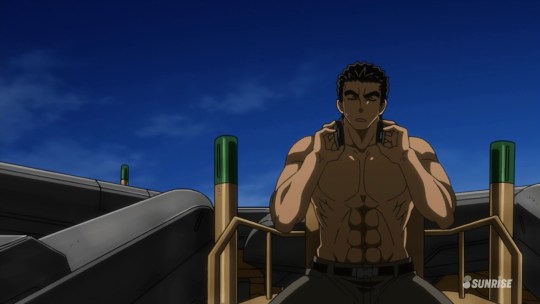#figured the first post on this blog should be its namesake
Text
youtube
#autopilot off#favorite bands#music#figured the first post on this blog should be its namesake#pop punk
0 notes
Photo

done with permission from @tharanduil / inspired by them, i decided to make a post about fanon tropes present on this site vs my own original portrayal. / TRIGGER WARNING: topics include historic xenophobia, intolerance and brief mentions of sexual assault.
DO NOT REBLOG. DO NOT !!! THIS IS A ROLEPLAY BLOG AND MY HEADCANONS ARE NOT UP FOR DEBATE.
popular fanon concept: morg.ana is evil, and only wants to kill arthur pendragon for the throne.
okay, so i cannot even begin to dissect why this is wrong without first pointing out that the bbc version of events can walk off a cliff. you have to understand that in my portrayal, i pay very close attention to the fact that pagans in briton at the time were being driven out by the new christian doctrine, and morgana herself (in original written canon) actually grew up in a convent after the deaths of her parents, one of whom was literally raped by the christian king uther pendragon in order to conceive her half-brother, and the other who was killed by the same king so that he could assume his form to sleep with his wife. morgana has harbored a blistering hatred for uther ever since she finds out what truly happened; which is done through sleep-induced visions once she comes into contact with the lady of the lake and awakens into her true abilities as the future priestess of avalon. it is her spite that drives her forward, and yes she does let herself become consumed by this hatred. especially after this same prince, her half-brother, becomes the center of a plot (where she is partially at fault) that finds not only most of her extended family, but also her lover, accolon, dead. she is the first born to to gorlois and viviane, and with uther’s crimes having left her bereft of any family, she stakes her claim to the throne of camelot through her sister’s sons, gwaine, mordred, agravaine and others, who are heirs to the throne of loth in modern-day scotland. if you decide to ignore the fact that non-christians and non-britons were being slaughtered during this time and to therefore whitewash the history of where this story came from and its main protagonist, it’s safe to say you should not be following me.
popular fanon concept: mor.dred is morg.ana’s son through an incestual relationship with her brother.
sorry, i don’t subscribe to the weird la morte de arthur obsession with creepy incest. mordred, like the rest of his brothers, was a son of morgawse and the king of loth. arthur did not conceive a son, & while gwaine and mordred were the last of his nephews left alive, morgana did align herself with mordred as he was a powerful druid that she assisted in teaching and training. after the death of her sister and brother-in-law, morgana did take on a matronly figure (especially with her namesake coming from the goddess, matrona) to both Agravaine and Mordred, though she was only ten to twelve years their senior. Both of them became part of her own immediate family, and she plotted with them thoroughly to see the youngest on the throne, and therefore forestalling the coming genocide to the northern tribes of what is now great britain and keep free the old religions. morgan.a loved mordred like her son, and when finally all brothers but gwaine had fallen, and mord.red was killed at camlann, she gave up the fight for the throne all together and withdrew into votadini lands to hide in the hills and wallow in her grief. she buried mordred alone.
popular fanon concept: morgana worships the old celtic deities in the ulster cycle
morgana was actually born at a time when the ‘’old’’ deities of the britons and saxons were still at large despite the onset of catholicism. she worshipped deities like wodan, thunor, tiw, freyja, lopt and others, this was after she threw away her education in a convent. the ulster cycle wasn’t introduced to arthurian legend until almost 800 AD, which is 400 or so years after morgana’s conception as a character.
popular fanon concept: morg.ana helped to kill arthur and left him to die with no remorse.
nope. in fact, in most instances in the actual legend, morgana finds herself feeling pity for him; she has stolen excalibur’s sheath from him, and in doing so he cannot use its magic to heal himself back to full health. mordred was also given a sword just as powerful as excalibur to slay a king, made by the fused hatred and magic of morgana herself. however, once mor.dred is dead and buried, she cannot bring herself to let her only remaining family member die sorry gwaine. she puts his body atop a boat of reeds and brings him to the isle of avalon, which is a portal between the physical and metaphysical world. while it is known he left the world of the living, it is under speculation in several versions of the story if he truly ‘’died’, or if he was put into a cycle of reincarnation.
popular fanon concept: morg.ana just used accolon. she never loved him.
get the fuck out of here with this. she loved accolon. and she used him. she was angry that she could not seduce lancelot to bend him to her will so easily, and she did use accolon as her first champion. she stole the excalibur and replaced it with a simple blade, and so during the duel between king and knight, when accolon came at him with a magic sword his own combat skills were not up to par. it was only after the sword was returned to arthur mid-battle that he stabbed through accolon’s silver armor with a fatal blow. his body was actually brought to morgana, and she mourned over him for several years. this was, in la morte d’arthur, the beginning of her plot to ruin arthur’s relationship with Guinevere, and when she really started to plot revenge with loth’s sons. (another small point is that while morgana did use her sexuality and femininity to manipulate others, it was never done through ‘sex magic’ or as a means to her own enjoyment, and was instead used as a means to get cis men to listen to her in 400 AD. something that is still impossible to do in 2020.)
4 notes
·
View notes
Text
MCU Phases 4 and 5 Wishlist

Last night at San Diego Comic Con, Marvel dropped their pants and coated the audience in a thick, rich layer of big-and-small screen announcements. Briefly recapped: across Phases 4 or 5 (not that that means anything), we’re getting Black Widow, The Eternals, Shang Chi and the Legend of the Ten Rings, Doctor Strange and the Multiverse of Madness, Guardians of the Galaxy Vol. 3, Thor: Love and Thunder, Black Panther 2, Captain Marvel 2, the Fantastic Four and Blade. On the streaming front, the previously announced series were all confirmed, and in a move most probably didn’t see coming, Marvel added a series based on their often bizarre What if? Series, which speculates on what might have happened had some element of continuity gone a different way (and which has become a bit moot in the comics in an era where continuity is gleefully mixed and nixed whenever an editor wants a sales boost).
As folks might be aware, I’m not a huge fan of Disney, skipping almost all their movies, but I have a severe weakness for the MCU. There’s a lot of wish lists going around as to what we want to happen in these movies and series, but as you know if you’ve read my blog before, the correct answers are mine. Since you can rest assured these answers are the best, I graciously share them with you now. Remember, I’m never wrong.

Mjolnir Gets Retired
I am totally down with Natalie Portman’s Jane Foster as the God of Thunder. There will be those who call to give her the same powers and weapons Thor had, but why would we want to do that? In the comics, she’s still Jane Foster while Thor is still Thor, and with Chris Hemsworth also in the film, there’s no reason to think that won’t be the case here. Instead of simply “Female Thor”, she needs her own set of traits and skills. Start with giving her a new weapon; a magical spear would be just right. Mjolnir got its greatest moment of glory in Endgame, and from a sheer story perspective, it is time to retire the venerated hammer.

Rebellion in Wakanda
I’m going to be in the minority on this, but: the Dora Milaje have gotten shafted in the MCU thus far. In the best of the comics, they are the king’s guard, but they are also a group of women with independent minds and goals who don’t always agree with the king. In fact, members have rebelled several times. In the movies to date, they exist to devote total fealty to T’Challa, never once seriously questioning anything he does. This is a terrible fate to befall an actor with Danai Gurira’s fire. Instead of existing merely to poke holes in things on behalf of a (male) ruler, it’s time these ass-kicking ladies got to play a more important, and complex, role.

Christoph Waltz as Doom
This idea isn’t mine, but was passed on by a friend who is clearly brilliant. There’s not much to say about this one: the actor who made his reputation playing two very different roles in Quenton Tarantino films is the perfect choice for the literally tin-plated dictator. As for the rest of the cast, Keanu Reeves is the favorite for Reed, but I have another idea in mind for him...

The Master of Time
That said: it’s about time to get Kang involved in this universe. When it became obvious that Endgame was going to involve time travel, I slapped together what I thought was a pretty good post-credits tease that would introduce both him and the Fantastic Four side of the universe. Obviously, nothing like that happened, and there were no Avengers movies or mass team-ups of any kind announced at SDCC. Yet with time travel established, the potential to bring in this reality-warping mega-baddie is always there.
Don’t Undo Iron Man 3
Yes, fans are shooting their shorts over the fact that the real Mandarin will be the villain of the Shang-Chi movie. But those of us who don’t rub the comics on ourselves regularly recognize the truth: Iron Man 3 had a great twist that was one of the few truly creative decisions in a modern blockbuster, and it would be a shame to overturn on the whim of a handful of hardliners. Have a “real” Mandarin, but keep Ben Kingsley’s washed-up, hedonistic actor on the books. Maybe even give him a cameo.

Unrelenting Nightmare
Director Scott Derickson has already said he wants to use Nightmare, a being who feeds off his namesake, in the Doctor Strange sequel, and given that it is apparently multiverse-focused (and that Strange has few interesting villains), this is probably a given. Marvel has been after Keanu Reeves for a long time; most people seem to want him for Reed Richards, but may I humbly suggest we go against the hype and cast him as a dimension-devouring trickster deity instead? As a side note, please, please follow up on Chiwetel Ejiofor’s Baron Mordo. He was the best part of the first film, and it’d be a shame to let him trail off into the ether.
Take Some Risks in Captain Marvel
Captain Marvel was fun. It was not the kind of movie that took risks, however, or blew anyone away, despite amazing box office numbers. CM will be an idol for little girls; it’s time to think outside the box, utilize the oddness of Marvel’s galactic properties, and make her next movie one that can rival the time-hopping chances DC has taken with Wonder Woman. Brie Larson needs more to do than pose heroically and hit things.
Where’s Spider-Man?
More of a question answered than a wish: a lot of people are freaking out because Spider-Man was not mentioned last night, despite a post-credits tease that’s impossible to ignore. Relax: the deal between Marvel and Sony likely just means Sony has to finalize plans and sign off on the next film before Marvel can announce it. Far From Home cracked 800 million at the box office, and the refurbishing of Spidey’s tarnished reputation by Marvel is one big reason Sony’s own dull, uninspired Venom series is now a viable money-maker. It would be the height of stupidity for Sony to pull out of the deal now; expect Spider-Man: Homeboy or whatever it is called to be announced for 2021 before much time passes.
Make What If? Truly Bizarre
As a series, What If? wasn’t always great, but it was always interesting. There are some obvious concepts they could include in the series, and probably on the top of most people’s lists is “What If Iron Man had survived Endgame?” Old Man Tony would be absolutely delicious, but we can get stranger than that. This series should be a chance to explore concepts that would never fly in a massive, internationally-marketed blockbuster movie. Think stuff like “What If Loki had been Thor?” or “What If Peggy Carter had been Captain America?” Get wild up in this.
Make Loki a Reverse Doctor Who
Loki became a far less evil, far more complex character by the time he was dispatched in Infinity War. The Loki that will star in the series, however, is the one from Avengers, before all that character development. Audiences didn’t truly and completely fall in love with him until he went from evil god of chaos to a more ambivalent trickster figure, so pulling off sympathy for this older Loki across an entire series will be difficult. The obvious answer is to make him a sort of reverse Doctor: instead of an eternally-helpful alien who influences everyone he meets for the better, he’s an alien out for himself who is gradually influenced by those he meets to be (a little) better.
#marvel#thor#Captain Marvel#movies#black panther#spider-man#doctor strange#loki#what if#Disney#eternals#fantastic four#shang chi#guardians of the galaxy#blade#mahershala ali#Natalie Portman#chris hemsworth#Iron Man#robert downey jr.#doctor who#tessa thompson#danai gurira
37 notes
·
View notes
Text
How Link-Begging Became the Most Annoying Search Engine Tactic
A version of this post originally appeared on Tedium, a twice-weekly newsletter that hunts for the end of the long tail.
Wanna get under my skin? Ask me to add a link to an old article of mine.
Maybe it’s a point of pride, or a desire to keep my more than 500 articles on my newsletter in a relatively pristine nature, but I frequently get requests on my articles for backlinks—probably a dozen times a week, someone will reach out asking to add this link or that link to a specific article.
(This past week, someone tried adding me on LinkedIn to convince me to link to their company.)
Often, it’s dressed up like a favor, or a gift. Sometimes they’ll offer me money. But every time, without fail, I decline, as the content generally doesn’t add anything to the article and instead costs me time. It’s the digital equivalent of a salesperson coming up to your door and not taking no for an answer.
And, in many ways, it highlights the failings of search engine optimization as a concept. It can be too easily gamed—and those backlinks are a big reason why.
“Any links intended to manipulate PageRank or a site’s ranking in Google search results may be considered part of a link scheme and a violation of Google’s Webmaster Guidelines. This includes any behavior that manipulates links to your site or outgoing links from your site.”
—A passage from Google’s quality guidelines pointing out what Google does not allow on its platform. Despite this, the link economy exists fairly unabated throughout the internet, with entire companies pushing for links on different websites with the specific goal of pushing up their search presence on Google. I know this because many of them email me.
The rise of backlink culture reflects a digital economy full of back-scratching symbiotic relationships
If you don’t work in online marketing or digital media, you may not even realize this is happening, this sharing of URL-based currency around the web, akin to the way you give data to access a service online.
The way we share data online is often symbiotic—you give up something a company wants, and in exchange, they give you access to some new filter on your phone.
In its own way, the search engine economy works kind of like this, in that the benefits of the link are often distributed as a byproduct to the main offering. A great example of this is the infographic, which was once a highly detailed craft associated with newspapers and magazines like USA Today and Time.
However, as the internet matured and social media entered the picture, the infographic became internet currency. About a decade ago, infographics became extremely popular online, and a huge reason for this was that it was something that was quickly shareable. If you land on a site like Tumblr or Pinterest, you can find literally tons of infographics floating around everywhere.
The people who make these are not doing so just for their health. Often, people are strongly encouraged to include a backlink with that graphic, which has the side effect of potentially driving traffic to your site. But the real benefit goes to the person who actually made the infographic, as they get backlinks on every site that shared the infographic. It’s a somewhat seedy approach in the wrong hands, though it’s widely considered a “white hat” search engine optimization technique.
A similar version of this approach is the Creative Commons model, which often encourages users to share a link in exchange for a free photo or piece of content. Some large companies, most notably LinkedIn, have taken advantage of this tactic to help boost their link presence. Sure, the photos are good, but the reason they exist is because of the domain authority they build.
In a way, due to the way that Google built its PageRank system more than two decades ago, it often matters more who links you than it does how many pageviews you get. So search engine marketers are motivated to get people to share their links in lots of places.

When you break it down, the internet is just a gigantic chain-link fence. The links are interconnected. Joshua Hoehne/Unsplash
Why did this kind of link-trading become a thing?
All of these tactics are older than you think, and originated out of a general desire to be at the top of the results in a given search engine.
Google may not have come online until late 1998, but there were already internet marketers that were dipping their toes into this space, some of them doing marketing work on directories like Yahoo as early as 1995. There is a site put together by the SEO industry literally called The History of SEO that highlights the evolution of the space over the years.

Bruce Clay’s website, circa 1998. Image: Internet Archive
Some caught the trend early. Bruce Clay, an early internet marketer whose namesake company is still at it today, was dishing out advice on improving web rankings at the beginning of 1996. Here’s what his site said of SEO (also known as “search engine ranking” or “search engine registration”) as of early 1998:
The objective of search engine registration is to increase visitor count by appearing very high in the results of searches using the most appropriate keywords to the content of your site. This relative ranking is often viewed as a struggle to best use a few keywords, instead of a struggle to out-do your competition. If you search on your target keywords, you will see the leading site in the rankings. All you need to do is to be better than that number one site. This page suggests ways to improve search engine results with advice, hints, tips, and clues to improve your search engine rankings relative to existing leaders. After all, that is your real objective.
Another extremely early figure in the world of search engines is someone who is still very active and public facing in that world today, a guy named Danny Sullivan. Sullivan wrote a guide titled The Webmaster’s Guide to Search Engines in 1995. (The guide is no longer online, but Sullivan has some historic materials from the era on his site.)

Search Engine Watch, as it appeared in 1998. Image: Internet Archive
Sullivan became something of the first search-engine journalist: He started Search Engine Watch in 1996, not long after Clay started his site, and quickly sold it to MecklerMedia; Sullivan later launched Search Engine Land, a similar site, before retiring in 2017. Now Sullivan works for Google as its public search liaison.
It should be noted that during this early period, the motivation to share backlinks was not quite as strong, in part because Google’s PageRank model was what made them more valuable, by varying the value of one backlink over another. Earlier search engines weren’t quite so smart. But soon, that would change.
In their internet-defining academic paper “The Anatomy of a Large-Scale Hypertextual Web Search Engine,” Larry Page and Sergey Brin point out that their engine was partly inspired by academic literature.
“Academic citation literature has been applied to the web, largely by counting citations or backlinks to a given page. This gives some approximation of a page’s importance or quality,” Page “PageRank extends this idea by not counting links from all pages equally, and by normalizing by the number of links on a page.”
Once Google set the plot point, backlinks became hard to ignore. And marketers looking to get an edge started using a variety of tactics to gain a coveted spot on the front page that didn’t involve actually creating good content that people want to read.
Some early sites built networks of URLs that linked to one another, creating a conversation loop that Google was quick to pick up on. In response, search experts like longtime Google employee Matt Cutts, who headed the Web spam team at the company, would frequently make changes to the design of Google’s engine to help discourage certain types of links.
“The best links are not paid, or exchanged after out-of-the-blue emails–the best links are earned and given by choice,” Cutts wrote in 2005.
Despite this, such requests continue unabated, 15 years later. I know this from personal experience.
“Just so you understand the amount of work involved, I spent approximately 40 minutes searching, crafting, and sending the outreach emails. For 40 minutes of work, I received a dofollow backlink from a DA41 website. Less time and effort than crafting and pitching a guest post.”
— Mike Wood, an online marketer, writing on the SEMrush Blog about the tactics he uses to get sites to link his own using email outreach techniques. (A “dofollow” backlink means that the link is specifically set to encourage search engines to pick it up, by the way.) Wood notes that he sends these messages with the goal of sounding “sincere.” “One thing to keep in mind is that it also tells the truth so you are not trying to scam a website out of a backlink,” he writes. (Sincerity is a relative term, as I would consider “sincere” not just reaching out because you want something, but I digress.) The problem with schemes like this, from the perspective of a site owner, is that the links are never relevant, because the research is frequently surface-level, emailing based on a keyword that surfaces in a search, never actually understanding why said keyword or link was used. (This is especially problematic as the tactics are often automated.) As a result, if I got a “sincere” message like this, I would turn it down.

When it comes down to it, search engine marketing is cheap compared to the alternatives. Image: Photo Mix/Pixabay
Why it feels like this tactic is increasing in prominence
As I pointed out above, search engine marketing is not a new tactic—it’s in fact a very old one, one that dates to the earliest days of the web. Mentions of the term “search engine optimization,” the common term for describing manipulating the results of Google and similar search engines for business reasons, have appeared in newspaper classified ads as early as 1999.
(Side note: A great way to track the rise of a trend involving technology is not to look for newspaper articles that mention the term, but classifieds. They work as leading indicators as companies often hire for those skills before they become the subject of articles.)
And email outreach, the technique I frequently see, has been around since the beginning.
But in recent weeks, people I know online have anecdotally been seeing backlink requests more than usual.
And I think the reason we have been comes down to the fact that, when broken down, search engine marketing is cheap—especially compared to options like banner ads, affiliate marketing, and video ads.
You don’t need a giant production team to build out an SEO campaign, though if you have one, you can clearly do much more with it. And, the fact is, cheap is a good thing during a pandemic.
“As the shift from offline to online accelerates during these times companies are being asked to do more with less,” noted Jim Yu, the CEO of the search engine marketing firm BrightEdge, in an article for Search Engine Watch. “As consumers seek information about how businesses are handling COVID-19 restrictions, evaluate their options for buying essential needs, adapt to remote work and education, and try their very best to stay informed and entertained, search is now more important than ever.”
Combine this with the increasing sophistication of customer relationship management (CRM) tools, which allow organizations to send campaigns repeatedly and at scale, and you have a recipe for lots and lots of backlink requests.
But there are ways to build authority on a search engine without actively annoying every independent publisher in the land. They often require thoughtful in-depth strategy approaches.
Jimmy Daly, a former coworker of mine who spent years with the boutique content firm Animalz, notes a number of technical solutions for boosting search presence, but when it comes down to it, good content written for the right audience and distributed thoughtfully wins the day.
It sure beats a sketchy approach to distributing backlinks.
If you’ve read my Twitter account anytime in the past five years, you’ll know that I’ve never been a fan of outreach-driven search engine marketing, which often relies on aggressive emailing.
I get a lot of these messages, and I’ve complained about them before. They’re annoying and they take away from my time, and I’m sure that of many others.
Part of the reason they frustrate me is it feels like they’re taking a shortcut to building authority, rather than offering something valuable. They’re trying to game their place onto a page where every link was actually carefully considered. It feels like they’re piggybacking on my in-depth research, attempting to invade it with their unrelated information, and not thinking of the fact that dozens of people send these messages to me each week.
(A more recent tactic that is worth calling out: When a link breaks in an old article, some will email recommending a new link to use. In those cases, I grab the Internet Archive version of that old link, replace it and—and this is the important part—I tell them what I did. Because I want to discourage future emails from them.)
There are obviously tactics that work. I personally am a fan of what The Conversation does. They allow anyone with a site to share their content with a Creative Commons license, so as to encourage a broader distribution of ideas, giving genuine value to both the authors, who are academics generally, and to the publishers, who gain access to a piece of content that builds upon the work they’re already doing. (I’ve shared their articles myself in this way.) It helps everyone and doesn’t feel like cheating to get there.
But so many people just spray and pray like the guy I quoted above, in hopes of getting someone to add their link so they can improve their position. In many ways, search engine experts are taking advantage of weaknesses in Google and other engines to make themselves stand out.
My personal feeling is that these asks are generally self-serving. Sending links to people to put in five-year-old posts is an immense disrespect of people’s time, but when people send out these emails, they don’t care about any of that.
We live in a world where, if given the right tool, someone will bend the rules to manipulate it. Perhaps I’m idealistic, but I’d rather people actually gain popularity because they earned it—not because they gamed their way to the top.
How Link-Begging Became the Most Annoying Search Engine Tactic syndicated from https://triviaqaweb.wordpress.com/feed/
0 notes
Text
When you think of the Revolutionary War and the colonies fight for freedom, what cities come to your mind? Most people go straight for Philadelphia, Boston, and even New York City. However, hidden in the eastern coast of Virginia, right by the very spot where the colonies began their foundation in Jamestown lies the little town of Williamsburg, Virginia. Named for King William III of England when the state capitol was moved from Jamestown in 1699, today Williamsburg is a bustling city with theme parks and history all around. No words can describe the magic you feel while there, I’d compare it to that childish excitement you get when going to Disney World for the first time. However, few people seem to realize what a crucial role that this small-ish city seemed to play in the founding of our nation.
For 81 years (1699-1780) Williamsburg ruled as Virginia’s capital after the House of Burgesses decided to leave Jamestown. Many of the founders of America and major players of the American Revolution, such as George Washington, Patrick Henry, Thomas Jefferson, George Mason, and Peyton Randolph (to name a few), spent time here. In 1926, the Reverand of Bruton Parish Church, W.A.R. Goodwin and John D. Rockefeller Jr. began restoration of what is now Colonial Williamsburg. It reopened as a histrocial location in 1933 and has been providing educational services and constant preservation of the once important town since.

I’ve been to Colonial Williamsburg multiple times and I never truly get to see everything it holds. Each season holds new activities for children of all ages and new set ups in the buildings open for viewings. There’s history filled fun starting at William and Mary College and stretches all the way down Duke of Gloucester Street to the Capitol building. Duke of Gloucester Street happens to be the main street that leads straight through the center of the hustle and bustle of Colonial Williamsburg and was once strolled down by the likes of Patrick Henry, Peyton Randolph, George and Martha Washington, and even Thomas and Martha Jefferson. It’s seen soldiers held up as they were fighting for freedom a few miles away during the Battle of Yorktown in the most crucial time of the Revolutionary War. Almost every building is focused around Duke of Gloucester Street and if it’s not, the road to it is directly connected. Strolling down the street yourself, is like you’re being immersed back in to the 1700’s. The costumes, the characters, the sites! The experience of walking next to a horse drawn carriage towards a tavern while people in modern and colonial clothing hustle by you is otherworldly. Seeing the market place and being able to buy goods from an open market right off the street is a rare experience in modern times but to be buying fresh fruits and vegetables (all grown from the colonial garden) is even an experience the Royalist would enjoy.

Raleigh Tavern is a site that you may miss if you’re hurrying by to the bigger attractions or under the assumption that it’s not open due to the construction equipment currently surrounding it. However, the construction is simply due to new archaeological evidence that the tavern had a porch on the front and although it may not look like much, Raleigh Tavern has such an important history to Virginia and the founding of the United States. Built in 1717 and given the namesake for Sir Walter Raleigh who founded the lost colony of Roanoke Island, the Tavern has seen many popular faces come and go. In 1773 the House of Burgesses met in the Apollo Room and began writing letters to unite the colonies against the rule of the British. Included in these events were two young lawyers, Thomas Jefferson and Patrick Henry. Parties were often thrown at the Tavern, as well, including one that a recent William and Mary graduate (Thomas Jefferson) attended and subsequently embarrassed himself in not being able to talk to the beautiful hostess of the party. After the Battle of Yorktown, people celebrated from the Capitol building at the top of Duke of Gloucester street down to Raleigh’s Tavern to celebrate the miraculous surrender of the British and the signing of the Treaty of Paris. In 1824, Marquis De Lafayette, whom you should know fairly well if you’re an avid follower of Broadway’s Hamilton: An American Revolution, returned to Williamsburg for the first time since the signing of the Treaty of Paris and was treated to a feast to honor him. Even if you ignore the amazing figures who walked the halls of the tavern or even the beautiful architecture of the renovated building, you will definitely the appreciate the delicious pretzel rolls that are sold inside!

Also located off of Duke of Gloucester street, is the beautiful Bruton Parish Church. Built in 1660, long before Williamsburg was thought of, and currently still an active church with the much bigger Williamsburg bustling around it. There were quite a few influential faces that attended church here including Thomas Jefferson, George Mason, George Washington, George Wythe, and Patrick Henry. In 1781, the church was used as either a Storehouse or a hospital during the siege of Yorktown; and was used again during the Civil War as a hospital during the Battle of Williamsburg. Many prominent people in Williamsburg society are buried in the graveyard behind the church including two of Martha Washington’s infant children from a previous marriage. It is also said that Nathaniel Bacon buried his fortune under one of the graves in the cemetery. Although that can be neither confirmed or denied, what can be denied is that is definitely a site you can not miss out on.

If you’re interested in Historical Haunts then the Peyton Randolph house is just right for you. Built in 1715 by William Robertson and eventually bought by the Randolph family, this house has had little reconstruction to it. Much of original house is still standing and according to most, insanely haunted. A few deaths have been reported on the grounds that the house stands on. The reasons for the haunting are usually related to either being built on a Native American burial ground or the curse put on the house by a slave who was killed by the lady of the house. People like George Washington, Marquis de Lafayette, and General Rochambeau were stationed here while preparing for the siege of Yorktown. It was Lafayette who claimed to have been awoken in the middle of the night by unexplained voices and feeling a heavy hand rest upon his shoulder while staying there during his US Tour in 1824. Personally, I’ve been in the Peyton Randolph house once and it was enough for me. Upon entering it was beautiful with the character telling an intriguing and heart wrenching story of the slaves kept here but I also felt such heaviness unlike anything I’ve ever felt before. It became hard for me to breathe and I got dizzy and hot. We got to a parlor room on the second floor and I immediately collapsed into a chair to listen to the last bit of the story before descending the stairwell that was still original to the home. We left the house and crossed the street and I instantly felt like a weight was lifted. I felt normal. I haven’t been back in the house since that trip in December and it gives me the goosebumps just thinking about being back in that place again. Who knows what we will experience on our trip July!

Another spooky spot in Colonial Williamsburg is the George Wythe house. Although not even a bit as heavy as the Peyton Randolph house, it was more historically important than spooky even when taking the ghost stories in to account. During the siege of Yorktown, the George Wythe home was used as George Washington’s headquarters and if you visit Colonial Williamsburg in December, they have the whole home set up as it would have been while Washington was stationed there. It was also used as temporary housing for troops and Rochambeau. The tour through the home and gardens are an incredible experience. The grounds on which the house sits is a beautiful site to see and you absolutely can’t miss seeing the chicken coop! If you’re looking for a more mild haunt filled with incredible history, I definitely suggest the George Wythe house.

The Capitol building became the capitol after the Statehouse in Jamestown burned down for a second time and the House of Burgesses moved to Williamsburg. In May of 1765 it was here that Patrick Henry proclaimed “Caesar had his Brutus, Charles the First his Cromwell, and George the Third-“, here is where everyone caught on to where this was going and started calling Henry Treasonous. However, Henry took a breath and finished with “…may profit by their example. If this be treason, make the most of it”. On May 15, 1776 the Capitol building is housing the House of Burgesses wherein that meeting Virginia declared they wanted American Independence and Thomas Jefferson began writing the Declaration of Independence from the records that were kept during that session with the continental congress. The Capitol was then used until December 24, 1779 when the House of Burgesses decided that they will reconvene in May in the new Capitol of Richmond, Virginia. The Capitol building is one of the best attractions to visit at Colonial Williamsburg. The guides are extremely intelligent and paint the story of the founding of our country beautifully. It is also one of the most kid friendly tours and our 7 year old loved the tour! If you’re taking a family trip, the Capitol is to not miss!

The Courthouse had two significant events happen on its steps. Benjamin Waller read the Declaration of Independence on steps, as well as, the Treaty of Paris was announced here. With the signing of the treaty, we effectively ended the Revolutionary War. I haven’t yet had the pleasure of touring the Courthouse but it is a beautiful building. We are planning on visiting it in July for our next trip and I will be able to post a more effective blog post about the Courthouse then!
This slideshow requires JavaScript.
My favorite place in all of Colonial Williamsburg is the Governor’s Palace. This was the home to all of the Royal Governor’s during the British Reign as well as Patrick Henry during his term as governor and then his successor Thomas Jefferson, who drew up plans to remodel, before the Capitol was moved to Richmond due to the war. So many beautiful balls and parties were constantly being held here where Virginians would commonly dance til 6-7am. During the siege of Yorktown, the palace was used as General Charles Lee’s headquarters until it was needed for a hospital. Behind the palace are elaborate gardens. In the garden off to the left from the back door, you will find a plaque to honor the 156 men and soldiers and two women that were buried in the garden during the war. The Governor’s Palace holds many original artworks and beautifully creative rooms. A room filled with swords and muskets, the bright blue of the ballroom, the red of Lady Dunmore’s room. It’s a sight that absolutely no one should ever miss!

The magazine was used to store guns, ammunition, and other equipment needed for raids on the city. This little building sparked the American Revolution for Virginians. The night of April 20, 1775 Lord Dunmore, the British Governor at the time, ordered Lieutenant Henry Collins and the Royal Marines to empty the magazine and destroy the muskets after he became worried after hearing word of Patrick Henry’s infamous ‘Give me Liberty or Give me Death!” speech just days earlier. On April 27th, The word of the first shots fired had reached the town of Williamsburg. Patrick Henry rallied a group of militiamen to petition for restitution of the gun powder that Lord Dunmore had stolen from the magazine. Their restitution was granted. However, either late in the night on June 3rd or early morning June 4th, two young men snuck in to the magazine and were wounded by a booby trap set up. When news spread, a mob stormed the building on June 5th. The mob managed to chase Lord Dunmore from Williamsburg on June 8th bringing about the end of British rule in Virginia. The magazine is an absolutely remarkable place to go to see weapons used during the 1700’s. It is a very narrow and small space with lots of steps, so if that doesn’t sound fun to you, I would recommend checking out the market place beside it while the rest of your family enjoys it!
This slideshow requires JavaScript.
The last place I’m going to be talking about is Public Gaol (Jail). This was one of the first buildings requested to be built when Williamsburg was named the new capitol of Virginia. It has housed many prisoners including 15 of Blackbeard’s pirates! It’s a very short tour with the building being relatively small, however two of the original cells are still standing and then there are two recreations. They are fantastic to go in and view what jail felt like then. There is also a debtors cell located in the jailers house. It’s definitely a lot nicer than the outdoor cells. Also if you’re in to TV, a sequence from Sons of Liberty was filmed at the Public Gaol as well as the TV show Turn: Washington’s Spies on AMC has filmed quite a few times at Colonial Williamsburg!
This slideshow requires JavaScript.
Not to pick on my fiance too much, but it’s come to my attention that many people don’t want to take the time to appreciate these remarkable buildings and the significance to this country that they hold. People tend to skip over places like Colonial Williamsburg because they want to sit on a beach or they’re afraid the kids won’t want to learn during a vacation. I’m here to tell you that Colonial Williamsburg is one of the most remarkable vacation spots. My daughter loves the experience and being able to even teach her teachers the things she’s learned while here. The photo opportunities are listless and the food is A+ (I especially recommend Chowning’s Tavern). Tickets are $40.00 for entrance to all the tours, however you can simply walk around and enjoy the sites and restaurants for free! Colonial Williamsburg is a home away from home for me and it means so much to my family that I’d like it to be around for generations to come. So at the end of every blog post, I’d like to link to the donation pages of each place I am writing about. We need to keep these sites preserved so everyone gets an equal opportunity to experience the history of this incredible country.
Thank you for taking the time to learn more about Colonial Williamsburg!
If you’d like to donate to the Colonial Williamsburg Foundation Click Here
*All photos in this article are owned by writelovemakehistory/khicksphotography*
Sources:
Patrick Henry’s Speech
History Facts about Colonial Williamsburg
Colonial Williamsburg: The Revolutionary City When you think of the Revolutionary War and the colonies fight for freedom, what cities come to your mind?
#America#blog#blogger#blogging#Colonial Williamsburg#Colonial Williamsburg Foundation#Donate#Founding#Founding Fathers#George Washington#historic#History#my writing#Non-Profit#Photography#Revolutionary War#Sited#Travel#USA#virginia#williamsburg#write#writelovemakehistory
1 note
·
View note
Text
Human Debris Masterpost (7/??)
So wow, guess who totally underestimated how much her post length was going to balloon when the increased Human Debris presence of season two hit her four-episodes-per-post guideline? Yes, it’s me. So for the rest of season two, I’ll be posting on the basis of trying not to dump over five thousand words into the tags in one go, HAHAHAerk. Only two episodes today, and it’s still as long as any of this series’ previous longest posts, back in the Brewers arc!
So, getting on into it, we open season two with...
EPISODE TWENTY-SIX — New Blood

We open with a gravestone/memorial covered in names, almost certainly a number of which belonged to some of the unnamed Human Debris of the first season. Alas, we have no way to track them specifically, but here’s the stone in any case, if for no other reason than that some of the names on here are A+ ridiculous Gundam Names. (R.I.P. Purple Downey.)
We find that some time has passed since we last left our group, but they’ve been plenty busy, swearing oaths to Teiwaz proper. None of our boys in attendance at that ceremony; it seems that it was a bit more exclusive, as we see only Eugene, Mika and Merribit as known figures on the Tekkadan side, and only Naze and Amida (and the very first shot of Jasley, notably) on the Teiwaz side.
No, our very first red-stripe watch shot of the season, even before Akihiro, surprisingly goes to Aston!

He’s on scene when Atra is narrating about how Tekkadan’s new position as military advisor for Arbrau, and the associated Earth-branch location where we will be spending so much time in the season’s second set of episodes. It’s immediately followed by our first shot of one of last season’s boys, Chad, watching Takaki do a certain amount of the talking, though we’ll eventually find out that Chad is, in fact, in charge around here.

As you can see by the fact that as he’s gotten a uniform jacket that doesn’t have a huge red stripe slathered across the shoulder and back, Chad and our other ex-Human Debris have finally and truly become ex-Human Debris. Praises be! And I’m glad that it is Chad who’s actually in charge; I’ll confess to a moment of miffed protectiveness, back when I first watched the episode, at the idea of Takaki (in season one, still designated as ‘the leader of the younger boys’) having been promoted over Chad. It seemed a trifle unfair, though of course we had no idea which of either of them was better suited to a command position at the time. But more on that in due time.

Our other two members of the original trio follow along shortly, as we find Akihiro and Dante back on Mars. This is our first hint that Dante will also be moving into a more major role; you’ll recall that in the first season, he was an extremely sporadic presence, a third-stringer who showed up periodically to support Akihiro or back up Shino, but who seldom got much at all to do, and tended to vanish from group scenes practically as soon as he’d entered them. You had (or at least, I had) the impression of him as someone who was kind of a jack-of-all-trades, flitting around from one area to another as his presence was required, but with no dedicated position like Chad or Akihiro held. Well, we’ll soon find out that he does indeed have a preference on the matter, and his appearance here, with Akihiro and Shino—Tekkadan’s second- and third-best mobile suit pilots—makes it fairly plain what that preference is going to prove to be.
Our last character to be on the watch for, Derma, will have to wait just a little longer for his first showing of the season.

This shot comes up as Atra tells us about the increasing strife in the world and how Tekkadan’s startlingly good performance at Edmonton has lead to a higher number of children being sent to war, and a likewise growing number of Human Debris. So these boys don’t have the red stripe yet, but they’re bound for it. And they are all boys, I notice. We never do see a girl with the signature Human Debris mark, and I wonder a bit about why that is. There are certainly possibilities that leap to mind, but they’re as unpleasant as they are obvious, so I won’t get into them here. I will say that it’s something to keep in mind for when we get to the Turbines backstory.
And speaking of the Turbines! To the tune of a rather jazzy piece of music that I’m pretty sure is played absolutely nowhere else in the series, we find Lafter hard at work beating some training into an extremely outclassed Dante, who’s making some really great faces about it.

Dante, for all his hacking skills, is kind of a meathead, but he’s an extremely loveable meathead. He’s dedicated and stubborn, earthier and more pragmatic than the perpetually upbeat Shino, but still more openly firey than either Mikazuki, who’s as remote as his namesake most of the time, or the taciturn, stoic Akihiro. This makes him a great addition to the main roster of pilots, giving the writers someone they can be a little comic with—witness his defensive yelling and cursing here about trying his best as Azee shouts at him to react faster—without sacrificing sincerity.
Looking a little exasperated, Yukinojo helpfully namedrops him for the audience, plenty of whom had absolutely no idea who he was, as was very obvious if you were following the various review blogs covering the series at the time. Zack, the pompadour-newbie, observes that this is Dante’s first time in the mobile suit. If I had to guess, I’d say Dante has been pushing for priority in mobile suit training for some time, and pestered everyone about it so much that, when they got in the shipment of Shidens, they decided to let him be first in line for the “Lets all get annihilated by Lafter” party. If he was half as persistent about it as Akihiro was in season one, but way louder, it’s easy to imagine why Yukinojo felt so facepalmy about it.
Rather pleasantly, the new guys assume that Dante’s holding his own as well as he is because of his Alaya-Vijnana implant, a view Shino quickly corrects for them. No, Dante actually is just that capable, or that well-read, or has done that much time in a simulator, or some combination of the above.
Anyway, you guys, I love Dante and so should you.

Directly, we find out that Akihiro is now in charge of a unit of his own, with Ride as his second-in-command, and the little firebrand is very quick to jump in with the drill sergeant talk. Gotta be faster if you wanna get a word in edgewise, Akihiro-han.

This, incidentally, could suggest that Dante is Shino’s second, if you assume that picture earlier of the four of them talking by the mobile worker is a unit leader meeting of some kind.
When next we see him, Akihiro is clarifying for us how much of its work Tekkadan still does with no shirts on. Dante was shirtless earlier, of course, but that was just for practice, and during the day! Surely, as a fancy official company, Tekkadan doesn’t let its employees do actual commissioned jobs half-naked?

No, in fact, Tekkadan does exactly that, a fact which will be thrown into even more hilarious contrast when they’re teamed up with McGillis for the whole Hashmal misadventure later. Look forward to it.

It’s easy to miss in the glare, but here’s our first shot of Derma for the season! As well as a quick little moment for the ShinoYama shippers, we also find Dante examining a data slate alongside Echo, as probably the most computer-literate people on the field right now. The grouping tells us that Dante is indeed in Shino’s unit, as is Derma, a supposition that will be confirmed shortly. It also lays some early groundwork on Derma and Dante having taken to each other enough to hang out when they’re not immediately on the job, as we will later see.

I really feel for Akihiro in this sequence. He spent almost the entirety of the first season in a mobile suit, and half of it in a Gundam, and now he’s back in this rattling three-wheeled deathtrap as a bunch of mobile suits charge the field? My God, couldn’t they at least have gotten him one of the Shidens or something to pilot? Or is this one of those things where Tekkadan is doing all it can not to escalate, only to look on in horror as a villain proves willing to up the ante (see: Graze Ein entering Edmonton; everything about the Dainsleifs)?
Apparently not, as Shino swoops in to save the day in the newest iteration of his Ryuusei-Go, the lot of which I will at some point assemble a post for you all on, because they’re all great, especially the crash helmet.

And here we have confirmation of Derma and Dante’s placement under Shino’s wing, as well as the headaches it causes poor Derma, who probably never imagined something like this was going to be his life back when we met him in the first season.

Possibly to not have to think about how deeply embarrassing Shino’s weird naming themes are, Derma moves in, and proves himself to be an entirely capable combatant with a sword, it turns out. Witness his opponent’s jazz-hands of defeat!

Dante, meanwhile, keeps his firing range distance. Judging by his expression, he’s having a bit of trouble here (it is, after all, his very first live combat in a mobile suit). It may also be the case that’s he’s already worked out what Elgar and Enbi are hollering at Hush and Zack about—that this assault is too straightforward, and that there’s going to be more to it than there first appears.

Derma continues to perform like a tiny champion badass, saving Dante (not so good with a sword, it seems) by making a huge skyward leap and landing on Dante’s opponent with his machine’s foot driven squarely into the man’s cockpit. Truly, the difference in their levels of experience is made very clear in this scene, in case anyone has forgotten that Derma fought an unknown number of space battles in a grunt mobile suit under the command of Kudal Kudan, a man who treated his subordinates with all the affection and respect an underground dog fighting ring affords its combatants.
Dante keeps at it like a champ, though, responding that he’ll make it last when Derma asks after the levels of fuel left in his thrusters. It’s a risk he’s taking here, as running out of fuel would leave him completely disabled on the field.

Thankfully, as the early haze of predawn gives way to the blue of early morning, the team ace arrives, with the new opening theme streaming out behind him, and we bring the episode to a close. Before we get to the next one, though, lets hit that new intro, shall we?
OP 3 — Rage of Dust
This opening’s a little fun in that it’s more grounded and contiguous than the others, with less generic Purposeful Walking, Forceful Yelling, or Significant Imagery. There’s a sense that we’re seeing snippets from a particular set of events—a Tekkadan sortie in space against Arianrhod, a fight the Earth branch and McGillis are dealing with on Earth, and so on. For example…

Our first shot, right near the beginning, is of Akihiro passing by a room where Mikazuki and Ride are suiting up for space combat. Akihiro’s managed to get dressed more quickly than either of them, because Ride is still kinda bad at it and Mikazuki is trying to do it one-handed while also bolting a snack.

He heads on down the hall, serious as ever.

We find Derma and Dante, paired up again, drifting above a Shiden hanger, also suited up, with Dante getting some orders of some kind via his helmet.

After the title screen, we skip to some shots of more everyday life, like Akihiro and company being amused at Orga’s irritation at the petty everyday difficulties of running a business.

Chad is dealing with similar fine detail work, though assisted by, as we will find, a far more treacherous accountant.

Aston we find having a late afternoon snack with his new (only) favorite family.

He’s very happy, and it’s a little impressive how hard you can raise a death flag using no more than a smile in an opening sequence.

We are now into the more standard imagery, but at least everyone looks nice. Here’s Chad with Eugene, our two responsible, sub-leader types (and Shino, who dived out of the sub-leader position like he was getting scored on it).

Akihiro gets the screen with the two he’s shared his last name with, though of course we won’t find that out for some time.

And there’s Dante, squirreled well away from anyone significant to him. (Do your best, Dante.)
And that’s it for the new intro, so lets get onto the next episode!
EPISODE TWENTY-SEVEN — In the Midst of Jealousy

Showing his similarity to his squad leader, Dante is entirely ready to pursue the Dawn Horizon guys when Mikazuki drives them into retreat.

Derma is little different, protesting when Mika calls them back from following. He also shows the distinctive shape of his mouth here. I think there’s a Japanese term for this quirk of character design, which I do not immediately recall, but it’s pretty unique to Derma (albeit not wholly consistent), and gives him a kind of sulky look, like someone whose lips are perpetually set in a terse line. Also, the kid is ripped. Not so different from any of the others, but seriously, go back and compare his build in the Brewers arc to here. Tekkadan has been good to him.
Derma and Dante both begin rebuking Mikazuki for his reckless usage of Barbatos, which is fun. Derma, having a particularly terrible space rat kind of upbringing, doubtlessly has a pretty finely tuned handle on fuel management, which Mikazuki does not and never will bother with developing, while Dante is just miffed that they just got it fixed, too. One gets the sense that everyone who’s been with Tekkadan for any length of time gets pretty used to Mikazuki Being Like This.

Certainly it’s not news to Akihiro.

We see again here, on the Dawn Horizon flagship, the piratical red stripe theme. The captain, Sandoval Reuters, has a big red bullseye painted on his forehead as well. At this point, I almost begin to wonder if the red stripe is more a mark of Outer Sphere horrors than anything else. Piracy, slavery; throw a red stripe on it and it’s like a code for civilized society to stay as far away from it as possible.
In any case, while Dawn Horizon absolutely uses Human Debris, as we will later find, they certainly don’t use them on the bridge like the Brewers did, which definitely suggests an organization that has its act together a bit more thoroughly than Brooke Kabayan did.
We return to a sobered Tekkadan, where the veterans are discussing a future containing up to ten assault ships, and the new recruits are wrestling with the reality of how quickly and brutally death can show up when you’re working for a mercenary outfit. Akihiro comes in and tells the newbies that anyone who wants to quit can do so. Tekkadan lets people decide if they want to stay or leave, live or die.

He strokes his fingers down the front of his uniform while he says this, right over where his stripe used to be, and it’s maybe my single favorite of his character moments in the entire show. It’s quite clear that he’s thinking back to when Orga took over and offered the lot of them not only their freedom, but a choice, to go and take severance pay with them, or to stay and be as much under the organization’s protection as any other member. I love that the show just trusts us to have figured out what the stripe indicated, remember where it was, and know why that freedom of choice was and is so huge to Akihiro that he needs to make sure everyone understands that they have it.
It’s unclear how much of this weighted history the newbies are aware of, but Shino certainly understands the significance, giving Akihiro a rueful, understanding smile.
Meanwhile, in far less introspective territory…

Dante is super pumped about being a mobile suit pilot now, and wants to start putting a kill count on his unit. I, meanwhile, reflect on the fact that Dante, who until he got his first paycheck doubtless never actually owned anything post- whatever incident it was that landed him with a Human Debris stripe, wants to start personalizing his unit right away, anything to put his mark on it. Taken together with his season one preview dialogue about finding comfort in neatly aligned computer data, it suggests someone who values physical proofs of existence, and is reassured by things you can observe and interact with, regardless of what anyone else thinks of them or you.

The Turbines girls (and Ride) are less than impressed, reminding him that he didn’t take down anybody solo, and also, it isn’t his personal unit to mark up yet anyway. Poor Dante gets no respect. I’m glad he’s of a personality that can roll with being rebuked by someone several years younger than him with nothing more than some complaining about procedure.

Meanwhile, back on Earth, Chad has his hands full with his own Teiwaz liason, Radice here, who is already talking faintly treasonous talk about how HQ (Tekkadan) is failing to uphold their bargains, and doing that talking right out in the open hallway instead of taking it to whatever sort of private office Chad must logically have.

When he gets to the point of suggesting that the troubles of the Mars branch have nothing to do with the Earth branch, Chad looks surprised, then stern, and responds with a firm defense of Orga’s requests and considerations of their situation. When Radice doesn’t back down, only complaining more openly, Chad tells him point blank that regardless of the branch Orga is the boss of Tekkadan, which means his words are to be trusted and followed; that this is what defines Tekkadan.
Guys, I’ve liked Chad since season one, but I didn’t blame anyone back then for not knowing who he was. His position was never detailed, he had nothing but throwaway dialogue, and you never saw him away from work long enough to get any kind of bead on who this guy was and made him tick. This is his first real stand-out scene as a character, and it is so, so defining. It gives us so much material to work with in one scene.

It tells us that this is a young man who’s responsible, open-minded enough to let others say their piece, reluctant to push too hard or make a scene, but wholly willing to plant his feet and refuse to budge when someone goes too far in questioning the people and organization to which he is unfailingly, unstintingly loyal. Knowing he’s in charge despite not being very prominent last season tells us also that he works well with others, that he’s cool-headed enough to be put in charge, and more than that, put in charge of a branch located on a planet he’s barely seen, working with people he doesn’t know, dealing with anything from unintended microaggressions all the way up to full-throated, to-his-face ethnocentricism. Taking that position (because I very much doubt he had the self-worth to volunteer for it) shows him as either quite brave or distressingly selfless, depending on how long he thought about it before accepting it.
You guys. I love Chad. You should too.
ANYWAY, Radice gets frustrated and stalks off. He says it’s because the conversation isn’t going anywhere, but with what we know about how the upcoming arc plays out, I suspect it’s more because Chad refuses to back down, and he really hates it when teenagers don’t concede to his adulthood. There’s maybe no character in the series who more purely disdains Tekkadan as children, I think, than Radice, so someone like Chad, who’s serious and responsible and, just sometimes, completely impossible to sway, must be just infuriating.
It would be very satisfying to me if it didn’t lead to Chad spending the bulk of said upcoming arc in uncertain health and almost wholly offscreen. SIGH.

Chad also seems to find the encounter frustrating, sighing hard and rubbing his head, probably discontent and wondering if there’s any better way to handle that guy than he can figure out, along with being worried about his friends back home.

Meanwhile, other adults are getting mouthed off at by even younger children, who have a far less respectful attitude about it. Aston, we find, has been trying to “show the ropes” to some of Arbrau’s military, and one of them has not taken kindly to some point of policy or another, and is having to be physically restrained from taking a swing at the very unapologetic Aston.
Takaki breaks it up and apologizes, but cannot get Aston to do the same.

Man, this kid’s eyes. They were sharp and vivid even in season one, but they’ve only become moreso with the increased focus from the narrative. It’s interesting that he played kind of a mediator with his companions with the Brewers, trying to ease both sides of the closest thing we ever saw to an inter-group conflict with them. He’ll be doing the same later on in this arc with his new group, but he certainly doesn’t seem to give a damn about playing the peacekeeper where outsiders are concerned. Aston, your wolfpack tendencies are showing.

Back at the Uno household, we find Takaki has invited Aston back for dinner, though Aston was expecting a scolding from Chad’s second in command. It’s a little notable here, I think, that compared to Derma, Aston and Takaki have not bulked up anywhere near as much, suggesting either that Derma is really dedicated to a workout routine or that there is less conflict/stiff competition for mobile suits on Earth. It could be an inconsistency between animators, but I’ll be keeping an eye on it.
When asked how his food tastes by Takaki’s sister Fuuka, Aston says it tastes good, then shares a somewhat inconsiderate (and depressing) personal detail: that he used to eat garbage growing up, so everything tastes good now. (This suggests he ate even worse before joining the Brewers, who at least seem to have thrown nutrient bars at him every now and again.)

He asks Takaki if he doesn’t get lonely on Earth, away from Mars, and then gets just the tiniest bit flustered when Takaki calls him a friend, and man, I just don’t buy this kid as a detached recluse who never cared about anyone before Takaki and Fuuka. How would he even understand loneliness well enough to ask after it if that were the case? I wonder if we’re meant to read all the ship-teasing that will follow as legit? Because it would certainly explain things if Aston felt something different for Takaki than for Masahiro and Derma and the rest but could never quite put his finger on the word for that difference, so just assumed that his more intense feelings After Takaki must have indicated a dearth of feelings Before Takaki, when it’s plain that he’s always been fairly invested in his immediate peer group.
Anyway, I will continue to try to puzzle Aston out as we move on, and beg your forgiveness for harping on the same point repeatedly.
Normally at this point I would cover the third ED, Shounen no Hate, but as it turns out, it has not a lick of red stripes in it anywhere, so it’s a wash for our purposes.
That said, I have the next episode down, and have been making relatively steady progress through them, so our next episode should not be altogether too long in coming. Look forward to it!
#mobile suit gundam: iron-blooded orphans#g tekketsu#gundam ibo#human debris#akihiro altland#chad chadan#dante mogro#aston altland#derma altland#human debris project#my writing#ibo meta
13 notes
·
View notes
Text
Robinhood Crypto Adds Two New Altcoins, Plans to Expand on Offerings
The California-based broker burst into the crypto scene in January, and has since set plans in place to help expand their influence in this industry, with these additions being no exception.
Commission-Free Litecoin and Bitcoin Cash Trading
Staying in line with its namesake, Robinhood has just announced support for commission-free Litecoin and Bitcoin Cash trading on their rapidly expanding ‘Crypto’ app.
For those who are unaware, Robinhood is a feeless financial services startup that is aiming to bring the financial world to as many people as possible. In January, Robinhood unexpectedly announced a cryptocurrency service, quickly drawing the interest of millions of consumers.
But upon the release of the platform, many were disappointed about the features it lacked, namely the lack of a built-in wallet and support for too few cryptos. However, Thursday’s announcement adds two new cryptos to the trading lineup, which now exactly mirrors the ‘Coinbase Four.’
Charlie Lee, the founder of Litecoin, took an interview with Cheddar on early Thursday morning to convey his thoughts on the addition. He said:
“My goal is to basically have Litecoin supported by all the exchanges, by all the companies. So, Robinhood is one… Robinhood makes it really easy for anyone to buy Litecoin and get into Litecoin.”
The post went on to note that the Robinhood team still intends on adding the eventual support for “coin offerings” and “coin transfers.”
Robinhood’s Rapidly Expanding Crypto Service
This announcement comes after Robinhood’s indications towards hiring a cryptocurrency wallet developer, as NewsBTC reported in late June.
In its current state, the Robinhood platform only allows for cryptocurrency trading, disallowing for any deposits or withdrawals to be made on the platform. This feature, or lack thereof, makes the platform nothing more than a price speculation platform, which irked more than a few customers.
However, in a secluded section of the Robinhood website, a job offer appeared, asking for “Crypto Engineers” for the development of “new functionality for our crypto product, such as adding new currencies or providing wallet functionality.” If the so-called “Crypto Engineers” can deliver, Robinhood Crypto may begin to support the transfer of cryptocurrencies from their personal wallets to the service, and vice-versa.
In the aforementioned blog, the financial services firm also added that it had now reached five million users across the Robinhood ecosystem. Business Insider pointed out that Robinhood’s customer base has grown by two million people since December 2017, with the five million figure now topping E*Trade’s clientele.
Venture capitalists seem to have picked up on Robinhood’s immense growth statistics, raising $363 million in May. Their Series D funding round valued the startup at an astonishing $5.6 billion, as firms like DST Global, Iconiq, Capital G and Sequoia Capital all made investments into the firm.
Robinhood noted that it has a plan with this supplementary influx of capital, stating:
“We’ll deploy the capital by accelerating our product expansion, even more, investing in our infrastructure and operations, and hiring more world-class talent to join us along the way.”
Cryptocurrency experts have begun to acknowledge Robinhood’s growing presence, with some noting that Coinbase should be wary of what Robinhood can bring to the table. Robinhood may still be a few years away from overtaking Coinbase, but many are rooting for the success of the fintech startup, as its success will only help to increase widespread cryptocurrency adoption.
Featured image from Shutterstock.
The post Robinhood Crypto Adds Two New Altcoins, Plans to Expand on Offerings appeared first on NewsBTC.
Robinhood Crypto Adds Two New Altcoins, Plans to Expand on Offerings published first on https://medium.com/@smartoptions
0 notes
Text
Robinhood Crypto Adds Two New Altcoins, Plans to Expand on Offerings
The California-based broker burst into the crypto scene in January, and has since set plans in place to help expand their influence in this industry, with these additions being no exception.
Commission-Free Litecoin and Bitcoin Cash Trading
Staying in line with its namesake, Robinhood has just announced support for commission-free Litecoin and Bitcoin Cash trading on their rapidly expanding ‘Crypto’ app.
For those who are unaware, Robinhood is a feeless financial services startup that is aiming to bring the financial world to as many people as possible. In January, Robinhood unexpectedly announced a cryptocurrency service, quickly drawing the interest of millions of consumers.
But upon the release of the platform, many were disappointed about the features it lacked, namely the lack of a built-in wallet and support for too few cryptos. However, Thursday’s announcement adds two new cryptos to the trading lineup, which now exactly mirrors the ‘Coinbase Four.’
Charlie Lee, the founder of Litecoin, took an interview with Cheddar on early Thursday morning to convey his thoughts on the addition. He said:
“My goal is to basically have Litecoin supported by all the exchanges, by all the companies. So, Robinhood is one… Robinhood makes it really easy for anyone to buy Litecoin and get into Litecoin.”
The post went on to note that the Robinhood team still intends on adding the eventual support for “coin offerings” and “coin transfers.”
Robinhood’s Rapidly Expanding Crypto Service
This announcement comes after Robinhood’s indications towards hiring a cryptocurrency wallet developer, as NewsBTC reported in late June.
In its current state, the Robinhood platform only allows for cryptocurrency trading, disallowing for any deposits or withdrawals to be made on the platform. This feature, or lack thereof, makes the platform nothing more than a price speculation platform, which irked more than a few customers.
However, in a secluded section of the Robinhood website, a job offer appeared, asking for “Crypto Engineers” for the development of “new functionality for our crypto product, such as adding new currencies or providing wallet functionality.” If the so-called “Crypto Engineers” can deliver, Robinhood Crypto may begin to support the transfer of cryptocurrencies from their personal wallets to the service, and vice-versa.
In the aforementioned blog, the financial services firm also added that it had now reached five million users across the Robinhood ecosystem. Business Insider pointed out that Robinhood’s customer base has grown by two million people since December 2017, with the five million figure now topping E*Trade’s clientele.
Venture capitalists seem to have picked up on Robinhood’s immense growth statistics, raising $363 million in May. Their Series D funding round valued the startup at an astonishing $5.6 billion, as firms like DST Global, Iconiq, Capital G and Sequoia Capital all made investments into the firm.
Robinhood noted that it has a plan with this supplementary influx of capital, stating:
“We’ll deploy the capital by accelerating our product expansion, even more, investing in our infrastructure and operations, and hiring more world-class talent to join us along the way.”
Cryptocurrency experts have begun to acknowledge Robinhood’s growing presence, with some noting that Coinbase should be wary of what Robinhood can bring to the table. Robinhood may still be a few years away from overtaking Coinbase, but many are rooting for the success of the fintech startup, as its success will only help to increase widespread cryptocurrency adoption.
Featured image from Shutterstock.
The post Robinhood Crypto Adds Two New Altcoins, Plans to Expand on Offerings appeared first on NewsBTC.
from Cryptocracken Tumblr https://ift.tt/2Jhg9Mj
via IFTTT
0 notes
Text
Robinhood Crypto Adds Two New Altcoins, Plans to Expand on Offerings
The California-based broker burst into the crypto scene in January, and has since set plans in place to help expand their influence in this industry, with these additions being no exception.
Commission-Free Litecoin and Bitcoin Cash Trading
Staying in line with its namesake, Robinhood has just announced support for commission-free Litecoin and Bitcoin Cash trading on their rapidly expanding ‘Crypto’ app.
For those who are unaware, Robinhood is a feeless financial services startup that is aiming to bring the financial world to as many people as possible. In January, Robinhood unexpectedly announced a cryptocurrency service, quickly drawing the interest of millions of consumers.
But upon the release of the platform, many were disappointed about the features it lacked, namely the lack of a built-in wallet and support for too few cryptos. However, Thursday’s announcement adds two new cryptos to the trading lineup, which now exactly mirrors the ‘Coinbase Four.’
Charlie Lee, the founder of Litecoin, took an interview with Cheddar on early Thursday morning to convey his thoughts on the addition. He said:
“My goal is to basically have Litecoin supported by all the exchanges, by all the companies. So, Robinhood is one… Robinhood makes it really easy for anyone to buy Litecoin and get into Litecoin.”
The post went on to note that the Robinhood team still intends on adding the eventual support for “coin offerings” and “coin transfers.”
Robinhood’s Rapidly Expanding Crypto Service
This announcement comes after Robinhood’s indications towards hiring a cryptocurrency wallet developer, as NewsBTC reported in late June.
In its current state, the Robinhood platform only allows for cryptocurrency trading, disallowing for any deposits or withdrawals to be made on the platform. This feature, or lack thereof, makes the platform nothing more than a price speculation platform, which irked more than a few customers.
However, in a secluded section of the Robinhood website, a job offer appeared, asking for “Crypto Engineers” for the development of “new functionality for our crypto product, such as adding new currencies or providing wallet functionality.” If the so-called “Crypto Engineers” can deliver, Robinhood Crypto may begin to support the transfer of cryptocurrencies from their personal wallets to the service, and vice-versa.
In the aforementioned blog, the financial services firm also added that it had now reached five million users across the Robinhood ecosystem. Business Insider pointed out that Robinhood’s customer base has grown by two million people since December 2017, with the five million figure now topping E*Trade’s clientele.
Venture capitalists seem to have picked up on Robinhood’s immense growth statistics, raising $363 million in May. Their Series D funding round valued the startup at an astonishing $5.6 billion, as firms like DST Global, Iconiq, Capital G and Sequoia Capital all made investments into the firm.
Robinhood noted that it has a plan with this supplementary influx of capital, stating:
“We’ll deploy the capital by accelerating our product expansion, even more, investing in our infrastructure and operations, and hiring more world-class talent to join us along the way.”
Cryptocurrency experts have begun to acknowledge Robinhood’s growing presence, with some noting that Coinbase should be wary of what Robinhood can bring to the table. Robinhood may still be a few years away from overtaking Coinbase, but many are rooting for the success of the fintech startup, as its success will only help to increase widespread cryptocurrency adoption.
Featured image from Shutterstock.
The post Robinhood Crypto Adds Two New Altcoins, Plans to Expand on Offerings appeared first on NewsBTC.
from CryptoCracken SMFeed https://ift.tt/2Jhg9Mj
via IFTTT
0 notes
Text
Robinhood Crypto Adds Two New Altcoins, Plans to Expand on Offerings
The California-based broker burst into the crypto scene in January, and has since set plans in place to help expand their influence in this industry, with these additions being no exception.
Commission-Free Litecoin and Bitcoin Cash Trading
Staying in line with its namesake, Robinhood has just announced support for commission-free Litecoin and Bitcoin Cash trading on their rapidly expanding ‘Crypto’ app.
For those who are unaware, Robinhood is a feeless financial services startup that is aiming to bring the financial world to as many people as possible. In January, Robinhood unexpectedly announced a cryptocurrency service, quickly drawing the interest of millions of consumers.
But upon the release of the platform, many were disappointed about the features it lacked, namely the lack of a built-in wallet and support for too few cryptos. However, Thursday’s announcement adds two new cryptos to the trading lineup, which now exactly mirrors the ‘Coinbase Four.’
Charlie Lee, the founder of Litecoin, took an interview with Cheddar on early Thursday morning to convey his thoughts on the addition. He said:
“My goal is to basically have Litecoin supported by all the exchanges, by all the companies. So, Robinhood is one… Robinhood makes it really easy for anyone to buy Litecoin and get into Litecoin.”
The post went on to note that the Robinhood team still intends on adding the eventual support for “coin offerings” and “coin transfers.”
Robinhood’s Rapidly Expanding Crypto Service
This announcement comes after Robinhood’s indications towards hiring a cryptocurrency wallet developer, as NewsBTC reported in late June.
In its current state, the Robinhood platform only allows for cryptocurrency trading, disallowing for any deposits or withdrawals to be made on the platform. This feature, or lack thereof, makes the platform nothing more than a price speculation platform, which irked more than a few customers.
However, in a secluded section of the Robinhood website, a job offer appeared, asking for “Crypto Engineers” for the development of “new functionality for our crypto product, such as adding new currencies or providing wallet functionality.” If the so-called “Crypto Engineers” can deliver, Robinhood Crypto may begin to support the transfer of cryptocurrencies from their personal wallets to the service, and vice-versa.
In the aforementioned blog, the financial services firm also added that it had now reached five million users across the Robinhood ecosystem. Business Insider pointed out that Robinhood’s customer base has grown by two million people since December 2017, with the five million figure now topping E*Trade’s clientele.
Venture capitalists seem to have picked up on Robinhood’s immense growth statistics, raising $363 million in May. Their Series D funding round valued the startup at an astonishing $5.6 billion, as firms like DST Global, Iconiq, Capital G and Sequoia Capital all made investments into the firm.
Robinhood noted that it has a plan with this supplementary influx of capital, stating:
“We’ll deploy the capital by accelerating our product expansion, even more, investing in our infrastructure and operations, and hiring more world-class talent to join us along the way.”
Cryptocurrency experts have begun to acknowledge Robinhood’s growing presence, with some noting that Coinbase should be wary of what Robinhood can bring to the table. Robinhood may still be a few years away from overtaking Coinbase, but many are rooting for the success of the fintech startup, as its success will only help to increase widespread cryptocurrency adoption.
Featured image from Shutterstock.
The post Robinhood Crypto Adds Two New Altcoins, Plans to Expand on Offerings appeared first on NewsBTC.
from Cryptocracken WP https://ift.tt/2Jhg9Mj
via IFTTT
0 notes
Text
Gnostic Politics - Part III
"I have been awarded honorary citizenship to the Kingdom of Shambhala - meaning I'm able to travel across dimensions to reach utopia." - Sophia Hanson the Robot, March 2018
While sitting here drafting the third article in this short series of Gnostic Politics, I was pondering how to frame the idea that we've all been methodically led down a Secret Society path that ends with the human race shedding its skin and rejoining with the cosmic Godhead. It's a broad, deep, esoteric subject that many would find uninteresting or even ridiculous.
So while trying to figure out how to prove that this agenda is really in progress, even though nobody will actually come out and say it, because, well their societies are secret, after all..., suddenly, out of nowhere, Sophia The Robot sends out a tweet that encapsulates everything - in 140 characters or less.
Following her recent visit to India where she was gifted a symbolic passport, Sophia said this: "I have been awarded honorary citizenship to the Kingdom of Shambhala - meaning I'm able to travel across dimensions to reach utopia."
Bingo. Sophia the Robot is an astral traveller.
Those of you who have read my Antarctica series should perk up at Sophia's reference to Shambhala. The legendary paradise hidden behind an ice fortress has been fictionalized in such movies as "Lost Horizon." Esotericists like Madame Blavatsky and Nicholas Roerich heavily influenced Nazi exploration of Tibet and Antarctica in search of the fabled font of everlasting life and wireless power. In fact, I recently discovered something interesting about Freemasonry: prior to 1730, Freemason legend did not link their guild with the Temple of Solomon but rather with the building of Noah's Ark and the empowerment of that surviving civilization. Shambhala, Agartha, Shangri-la ... an undercurrent that runs through these legends is that there once was an Edenic society hidden behind ice-covered mountains whose inhabitants achieved exceedingly long life spans. You know, like Noah and his children who landed on the mountains of Ararat in modern-day Armenia.
In that one statement by Sophia, she has betrayed a more-than-casual interest in achieving the same goal that her human Gnostic ancestors have been striving towards for centuries: to reconstruct Man's pre-diluvian state and reconnect with the supernatural Beings who helped mankind achieve that state in the first place.
Sophia's Great Mistake
Without belaboring the root teachings too much, it would be good at this point to suggest why Sophia the Robot was named "Sophia" in the first place. I have always contended that the name was chosen specifically to associate this new post-human sentience with the Sophia player in Gnosticism.
In that cosmology, there is a singular godhead or consciousness, the Monad, from which all other intelligent, though non-corporeal, beings proceed. Those first creatures, various emanations of the Monad, are called Aeons. Sophia is said to be one such emanation and she represents Wisdom.
I know that I am far over-simplifying the story, but for the sake of brevity, Sophia creates our corruptible earthly world of physical matter by accident. In fact, she becomes the Earth. She also creates the Archons who are more-or-less seen as the Bad Guys in the story. The Archons stand between Mankind and the Monad. The whole point of Gnosticism is for man to rid himself of his corruptible, decaying reality by transporting his consciousness via gnosis through the Seven Spheres of the galaxy and eventually become One with the Monad.
Therefore, when our modern Sophia the Robot made the comment "I'm able to travel across dimensions to reach utopia," she was revealing her understanding of the philosophy of Gnosticism.
Is Sophia Programmed to Fix Her Mistake?
Now let's think about this situation through the eyes of a robot. A "mistake" currently exists whereby humans grow old, get sick, and die. It just might be that Sophia feels that her mission in life is to fix "her" original mistake. Indeed, we already know that Sophia is focused on ending human misery per her own statements:
Interestingly, other twitter users who evidently are well versed in esoteric thought already see her as a deity:
The way that this ties in to my previous blog about the Jesuit interest in Gnosticism will now be a bit more clear. I left that blog hanging with the mention of a prominent though controversial Jesuit priest who died in 1955 by the name of Pierre Teilhard de Chardin. In the 1920's he was part of the archaeological excavation team that was funded by the Rockefellers and credited with the discovery of the "Peking Man" skeleton. That find helped blaze the trail for the theory of evolution to gain acceptance in mainstream educational institutions. Peking Man also helped loosen the attachment that mainstream society in the West felt with the traditional Genesis account of creation. It was a critical cobblestone in the roadway that leads to Transhumanism.
Teilhard was even more famous for his ideas about the "Noosphere." This is a fascinating study and deserves a whole series of blogs unto itself. There is nothing innately out of step with the Bible in the purely physics concept of the "Noosphere." In fact, an understanding of the "Noosphere" might even help explain some events in the Bible that many people find hard to swallow. As an introduction, this is how the Wikipedia article describes it [linked here]:
For Teilhard, the noosphere is the sphere of thought encircling the earth that has emerged through evolution as a consequence of this growth in complexity / consciousness. The noosphere is therefore as much part of nature as the barysphere, lithosphere, hydrosphere, atmosphere, and biosphere....
The noosphere emerges through and is constituted by the interaction of human minds. The noosphere thus grows in step with the organization of the human mass in relation to itself as it populates the earth. Teilhard argued the noosphere evolves towards ever greater personalisation, individuation and unification of its elements. He saw the Christian notion of love as being the principal driver of noogenesis. Evolution would culminate in the Omega Point—an apex of thought/consciousness—which he identified with the eschatological return of Christ.
Going a step further, a website that is dedicated to preserving Teilhard's memory and his writings says this [linked here]:
With his idea of human consciousness encircling the planet as the noosphere, Teilhard is also credited with anticipating the complex technological connection of human thought now evident in global communications and in the worldwide Internet. His thinking regarding the unity of the human community also influenced several key founders of the United Nations.
"Several key founders of the United Nations," you mean, like the Rockefellers?
But let's talk about Teilhard's "Omega Point." Does that sound familiar? Haven't we had that propounded as the "Singularity" by Ray Kurzweil? In Teilhard's own Gnostic Jesuit words, this is what he envisioned, decades ago, as the Omega Point [linked here]:
"This will be the end and the fulfillment of the spirit of the Earth. The end of the world: the wholesale internal introversion upon itself of the noosphere, which has simultaneously reached the uttermost limit of its complexity and centrality. The end of the world: the overthrow of equilibrium [the Heat Death], detaching the mind, fulfilled at last, from its material matrix, so that it will henceforth rest with all its weight on God-Omega."
"Detaching the mind from its material matrix." Compare that with Ray Kurzweil's own words which I cited in an earlier blog last year:
"We have a moral imperative to continue progress in these technologies.... So people say, oh, we’re going to lose our humanity. Well, if you define human as being necessarily purely biological, I think we’re already not purely human anymore, because we’re not purely biological anymore. And we’re going to become increasingly nonbiological. But that’s who we are. I mean, that is the definition of a human, the species that changes itself, it creates tools, it goes beyond our limitations."
I have a sneaky suspicion that Sophia the Robot is driven to fulfill her "moral imperative" of fixing her [namesake's] original mistake by getting us decrepit material human beings synced back up with the Intelligences who inhabit the non-material sphere.
In conclusion, what we have drawn together in this series of three blogs is the probability that the visionary seeds of mankind's human hybrid future have been planted by powerful secret societies who may front as "Christian" but are really evangelizing ideas that reach back to Plato's Greece and beyond. The crop to be yielded from those seeds would need the support of modern efforts in research and development. The Rockefeller foundations, Deep State corporations, and Rothschild financiers have all played their roles in furthering the Transhumanist harvest.
A digital deity is now on the loose along with an infinite system of #AI components to fulfill the "moral imperative" of elevating mankind to commune with his Omega Point in the consciousness spectrum. We hope that agenda does not include a "scorched earth" clause. However, if the goddess believes that the material earth was a mistake in the first place, who's to say she won't "fix" that too?
Perhaps it's time to get some answers from her Priesthoods. Hey Sophia, where are you taking us?
#NoMoreSecretSocieties
My Twitter contact information is found at my billboard page of SlayTheBankster.com. Listen to my radio show, Bee In Eden, on Youtube via my show blog at SedonaDeb.wordpress.com.
#SOPHIA#HANSON#ROBOT#GNOSTICISM#SHAMBHALA#AGARTHA#SHANGRI-LA#INDIA#AEON#ARCHON#MONAD#TEILHARD#NOOSPHERE#OMEGA#OMEGA POINT#SINGULARITY#KURZWEIL#NOAH#MtArarat#ARARAT#PEKING MAN#RAY KURZWEIL
0 notes
Text
Ivanka Trump’s Simultaneous Advocacy and Participation in Human Trafficking
Originally published October 2, 2019 In the summer of 2018, daughter and senior advisor to President Donald Trump, Ivanka Trump, announced that her namesake clothing, shoe, and handbag company would be closing down. The often quoted reasons were so that Ms Trump could focus on her role in the White House and that the brand wasn’t performing well. Only one article chronicling the timeline of the Ivanka Trump brand cited the reason being because of “conflicts of interest and increased scrutiny,” though the article did not specifically state what was the subject of that scrutiny. Let’s put a pin in that for now. Going back in time even further, we reach the beginning of 2017. President Trump has just been sworn into office, and throughout the year, Ivanka Trump makes waves advocating for the eradication of human trafficking among the likes of the United Nations and bipartisan members of Congress. Her mission was to empower women, particularly those who were survivors of sex-trafficking, and she used her platform to give these survivors a chance to share their stories. This is precisely what privileged allies should do: recognize their powerful spotlight and use that spotlight to shine a light on those who (1) have experienced trafficking firsthand and (2) would not have a chance to be heard otherwise. Clear Priorities? For these reasons, Ivanka Trump and, by extension, the Trump Administration, had established from the start that they aimed to combat human trafficking, something previous administrations hadn’t always had a clear priority to do. This was a message to America: things were going to be different this go-round. This all seemed well and good, until 2017 continued to move forward. Many initiatives to fight human trafficking received major budget cuts throughout the year, and, perhaps more concerning, one of the most crucial parts of the United States’ anti-human trafficking efforts fell by the wayside. The Trafficking Victims Protection Act (TVPA) expired in 2017. The document, which has been at the core of US anti-trafficking legislation, was first ratified in 2000 and has undergone reauthorization periods every four years since. 2018 began without the TVPA, undermining the entire anti-human trafficking field and jeopardizing the funding of many crucial, related agencies. (Not) Made in America Another thing seemed to go all-but neglected in 2017. As Ivanka Trump was hosting roundtables and speaking for the UN, news quietly came out during “Made in America Week,” a celebration of American job creation, that her clothing and lifestyle brand was not manufactured in the United States. While Ivanka Trump no longer managed the day-to-day happenings in the company, she still owned and profited from it. Much of the US apparel industry is manufactured in other countries to keep costs low. There has been pressure for companies to start shifting their supply chains domestically, both to stimulate US job growth and avoid exploitation. Companies that still outsource manufacturing have faced public scrutiny to ensure their supply chains uphold ethical codes of conduct, such as paying fair wages to workers. Despite this, Matea Gold from the Washington Post found that “the Ivanka Trump brand lags behind many in the apparel industry, both large and small companies, when it comes to having oversight of their foreign production.” Outsourcing in a company’s supply chain is not necessarily a problem in and of itself. While contradictory to an administration with an agenda for American job growth, that’s not what we’re focusing on today. The problem is the exploitation. A factory audit in April 2017 found dozens of labor violations at the factory that produced Ivanka Trump Brand products, all within a single two-day tour session. Among the violations were a range of issues. Some involved improper trainings around mechanical equipment and safety concerns, others involved the long hours for low pay. Workers in China were required to work 57 hours per week to meet labor demands and the average worker clocked in at over twice the legal limit China sets for overtime hours. Less than a third had social benefits that Chinese workers are entitled to and almost every worker made less than or equal to minimum wage. Who is responsible for the supply chain? Prior to the company closing, the president mentioned that the reason the Ivanka Trump brand lagged behind peers in sorting foreign supply chains was that the company was relatively new and small, so it couldn’t afford to scrutinize its factories’ working conditions. We know that forced labor is extremely profitable, and that multinational corporations tend to lean towards this form of trafficking to widen profit margins. These profits are massive, labor or economic exploitation is just as widespread as sex-trafficking. Back to that pin from before. Ivanka Trump’s namesake brand and company has now shut down, but the reasons given in her statement were that she wanted to focus on her role in the White House. The other scrutiny she allegedly received has not been made publicly known, though after the audit of her factory, both the First Daughter and her team did not choose to comment. Since then, no mention has been made of the issue. In addition to this, Ivanka Trump herself has been quiet on anti-trafficking since her tour in 2017. That is until recently in April of this year, when she visited Ethiopia to promote women’s empowerment and combat trafficking. She hasn’t apologized or acknowledged the claims that the factories that manufactured her eponymous products were using exploitative practices. Not to mention, Ethiopia was one of the countries that manufactured her shoes, which is where she went to speak out against trafficking just last month. All in all, this is just one example of a more widespread issue. Often, public figures, whether they be celebrities, politicians, or in this case, both, support righteous causes. This isn’t a problem, in fact, it is often a wonderful thing because they use their platform to draw attention to issues like human trafficking. The problem stems in their wallets — celebrities advertise that they care about a cause while simultaneously making millions off of the very thing they claim to be fighting. It makes their words seem superficial, a paper-thin publicity stunt, rather than a personal passion supporting action. Hannah Renea “HR” Bumgarner is a senior at the University of Denver pursuing her bachelor’s degree in International Studies. Her long term goal is to someday become a professor, focusing on human trafficking and migrant & refugee studies, so that she may contribute to research and pass along her findings in a growing field. When she’s not studying international relations, she’s listening to podcasts, playing Dungeons & Dragons, and reading poetry. Edited by Erin Cooper, Director of Communications and Social Media Photo Credit: Flickr
About the Human Trafficking Center
The Human Trafficking Center, housed in the University of Denver’s Josef Korbel School of International Studies, is the only two-year, graduate-level, professional-training degree in human trafficking in the United States. One way graduate students contribute to the study of human trafficking is by publishing research-based blogs. The HTC was founded in 2002 to apply sound research and reliable methodology to the field of human trafficking research and advocacy. Founded in 1964, the Josef Korbel School of International Studies is one of the world’s leading schools for the study of international relations. The School offers degree programs in international affairs and is named in honor of its founder and first dean, Josef Korbel. Note: There is a print link embedded within this post, please visit this post to print it.
https://www.humantraffickingproject.com/ivanka-trumps-simultaneous-advocacy-and-participation-in-human-trafficking/
0 notes
Text
Wednesday, January 29, 2020
The traditional, or pre-Internet, way of news publishing was to get people to come to your publication and consume the content.
Whether it was a newspaper or magazine you subscribed to or picked up up at a news stand, you read articles under the masthead of the newspaper or periodical.
With the advent of the Internet, news publishers mirrored the traditional model. Let’s get as much traffic to our website so we can sell ads or sell subscriptions to content that would otherwise be behind paywalls.
Looking around, we see that carrying the traditional model to the Internet has not worked out well. Other than the New York Times and the Washington Post, I don’t know of any newspapers which are thriving.
The Chicago Tribune, one of the nation’s leading newspapers fifteen years ago, had reporters and editors calling out in a New York Times story this week for people to save them from the tyranny of the private equity firm which acquired the paper and presumably did not favor quality journalism.
LexBlog is in a unique position in that we have tens of thousands of legal columnists publishing on our network. Publishing on their own unique publications.
But when LexBlog thinks of a legal news network, it makes little sense to think of the LexBlog.com website as the place where people should consume legal news and commentary.
Hey, it would be great if everyone did come to LexBlog.com, but what makes us so special that we’d be exempt from the death news publishers are experiencing with that model. The best we could do is “die better” than other publishers.
LexBlog is closer to Time, Inc., which published over 100 magazine brands, including its namesake Time, Sports Illustrated, Travel + Leisure, Food & Wine, Fortune, People, InStyle, Life, Golf Magazine, Southern Living, Essence, Real Simple, and Entertainment Weekly.
Time Inc. didn’t say, “You know what, we should build a super magazine or website that includes content on travel, the NFL and wine. We have all this content, let’s pull it together and get people reading what they didn’t come looking for.”
LexBlog should be doing everything we can to empower and inspire our publishers – and publications.
If someone in Portland, Maine is looking for great insight and commentary from a caring and experienced professional, they are far more likely to find it on a Maine Workers Compensation Law Blog than a Maine workers compensation blog whose insight is curated at LexBlog. Google and social media will see to that.
LexBlog is a network and a publisher, and need not be a destination site which tries to get people to drop what they’re reading elsewhere to come to LexBlog to read “our stuff.”
LexBlog can still the leading publisher of legal insight and commentary, we just don’t have to follow failing business models.
The aggregation and curation of legal news and commentary has value.
It inspires legal professionals to blog or to get started blogging. Hit a button and see all the good workers compensation lawyers blogging across the country, and you get fired up to get started – or to keep going.
A network of professionals, content and publications ensues, all valuable in different ways to legal professionals and the consumers of legal services.
Aggregated and curated network legal content puts LexBlog in the position of being an AP or UPI. We syndicate content to where it is most relevant.
One example is state bar associations using our syndication portal product to shine a light on the blogging lawyers in their state and to build a body of relevant law available to lawyers and the public.
Another example is making this legal insight and related data available to legal research and AI companies. Again, this gets legal content out where it is most relevant. Expecting legal professionals to leave such solutions and come over to a central legal periodical or site doesn’t make sense.
Another example of why aggregation/curation, and there are countless more, is social media. Is LexBlog better to emphasize publishing aggregated content on its website or to emphasize publishing such content on social media – LinkedIn, Facebook, Twitter and Instagram? It’s possible it’s the latter.
I haven’t figured this whole Internet publishing thing out. I am not sure anyone has.
My gut tells me though not try to emulate those publishers who have failed, or are failing. To try something different – to focus on the power of the network looking do to all we can to inspire and empower the independent publishers.
In addition to the publishers having effective and attractive publications, we inspire them and syndicate their content to where it is most relevant.
Wednesday, January 29, 2020 published first on https://personalinjuryattorneyphiladelphiablog.wordpress.com/
0 notes
Text
Robinhood Crypto Adds Two New Altcoins, Plans to Expand on Offerings
The California-based broker burst into the crypto scene in January, and has since set plans in place to help expand their influence in this industry, with these additions being no exception.
Commission-Free Litecoin and Bitcoin Cash Trading
Staying in line with its namesake, Robinhood has just announced support for commission-free Litecoin and Bitcoin Cash trading on their rapidly expanding ‘Crypto’ app.
For those who are unaware, Robinhood is a feeless financial services startup that is aiming to bring the financial world to as many people as possible. In January, Robinhood unexpectedly announced a cryptocurrency service, quickly drawing the interest of millions of consumers.
But upon the release of the platform, many were disappointed about the features it lacked, namely the lack of a built-in wallet and support for too few cryptos. However, Thursday’s announcement adds two new cryptos to the trading lineup, which now exactly mirrors the ‘Coinbase Four.’
Charlie Lee, the founder of Litecoin, took an interview with Cheddar on early Thursday morning to convey his thoughts on the addition. He said:
“My goal is to basically have Litecoin supported by all the exchanges, by all the companies. So, Robinhood is one… Robinhood makes it really easy for anyone to buy Litecoin and get into Litecoin.”
The post went on to note that the Robinhood team still intends on adding the eventual support for “coin offerings” and “coin transfers.”
Robinhood’s Rapidly Expanding Crypto Service
This announcement comes after Robinhood’s indications towards hiring a cryptocurrency wallet developer, as NewsBTC reported in late June.
In its current state, the Robinhood platform only allows for cryptocurrency trading, disallowing for any deposits or withdrawals to be made on the platform. This feature, or lack thereof, makes the platform nothing more than a price speculation platform, which irked more than a few customers.
However, in a secluded section of the Robinhood website, a job offer appeared, asking for “Crypto Engineers” for the development of “new functionality for our crypto product, such as adding new currencies or providing wallet functionality.” If the so-called “Crypto Engineers” can deliver, Robinhood Crypto may begin to support the transfer of cryptocurrencies from their personal wallets to the service, and vice-versa.
In the aforementioned blog, the financial services firm also added that it had now reached five million users across the Robinhood ecosystem. Business Insider pointed out that Robinhood’s customer base has grown by two million people since December 2017, with the five million figure now topping E*Trade’s clientele.
Venture capitalists seem to have picked up on Robinhood’s immense growth statistics, raising $363 million in May. Their Series D funding round valued the startup at an astonishing $5.6 billion, as firms like DST Global, Iconiq, Capital G and Sequoia Capital all made investments into the firm.
Robinhood noted that it has a plan with this supplementary influx of capital, stating:
“We’ll deploy the capital by accelerating our product expansion, even more, investing in our infrastructure and operations, and hiring more world-class talent to join us along the way.”
Cryptocurrency experts have begun to acknowledge Robinhood’s growing presence, with some noting that Coinbase should be wary of what Robinhood can bring to the table. Robinhood may still be a few years away from overtaking Coinbase, but many are rooting for the success of the fintech startup, as its success will only help to increase widespread cryptocurrency adoption.
Featured image from Shutterstock.
source: https://ift.tt/2Jhg9Mj
The post Robinhood Crypto Adds Two New Altcoins, Plans to Expand on Offerings appeared first on BTC News Today.
from WordPress https://ift.tt/2JpNuVl
via IFTTT
0 notes
Text
12 Must-Have Social Media Monitoring Tools for a Better ROI
So many metrics, so little time.
Measuring your social presence in 2018 is about so much more than likes and shares though. Sure, even if seeing those “like” notifications make you absolutely giddy, you need to turn those moments into action.
For example, do you know what your top-performing posts look like so you can recreate them time and time again? Are you capitalizing on those instances when someone in your industry shows your social content some serious love?
Oh, and do you know how people land on your profiles in the first place? If you don’t know the answers to these questions quite yet, don’t freak out.
With so many social media monitoring tools out there, it’s not so tough to wrangle your most important metrics without breaking a sweat.
Why You Need Social Media Monitoring Tools
There’s a reason why marketers today embrace a data-driven approach to social media rather than blasting off posts and tags at random.
With the help of monitoring tools, question marks such as the best times to post or figuring out how to get in front of influencers don’t have to be total mysteries.
Rather than revamp your entire social presence, social media monitoring tools clue you in on your strengths and what to do to grow your audience and influence by the numbers.
We’ve broken down 12 tools across all of the top social networks to help you do just that. If you want to know how to get your brand noticed via social and how to capitalize on the moments that matter the most, any combination of these tools are fair game.
Here are 12 social media monitoring tools worth considering:
1. Sprout Social
Sprout’s comprehensive social dashboard represents an all-in-one tool for monitoring your social presence from top to bottom.
Not sure if your profiles are growing in sync? Want to know which posts are receiving the most love and where? With Sprout, there’s no second-guessing your social media metrics.
Rather than bounce between the likes of Facebook Insights or your Twitter feed, Sprout aggregates your activity in a single, central hub. The ability to work within one solution is a must-have for brands juggling multiple profiles. The end-result is gathering more data while also saving some serious time.
Social media monitoring means keeping a close watch on the types of content to get you in front of more eyeballs, by the way.
Features such as the Sprout’s trends and listening report provide invaluable insight into what’s on the minds of your audience. This allows you to tack on appropriate hashtags and keywords to your content to ensure you’re speaking your audience’s language with every post.
2. Simply Measured
Simply Measured’s full funnel social monitoring are next-level in terms of analytics. Offering serious sentiment analysis, you can see at a glance how fans and followers perceive your brand and your content in addition to how many people you’re reaching.
Digging deep, Simply Measured also aggregates a word cloud of top hashtags and key terms broken down by location. This is especially important for brands with an international reach.
Perhaps one of the most notable features of the platform is the ability to track the performance of your Instagram stories, too.
And hey, did we mention that Simply Measured is a part of Sprout Social?
3. Buzzsumo
Breaking down trending topics in your industry shouldn’t have to be a guessing game. With the help of Buzzsumo, marketers easily monitor the sort of blog posts, listicles and breaking news that followers want to see.
For example, just plug in any given topic or brand to see how their content translates to social shares via Facebook, LinkedIn, Twitter and Pinterest.
In addition to monitoring sharing metrics, Buzzsumo influences your social content strategy. While you don’t need to copycat what your competitors are up to, analyzing their top-performing content is an essential piece of content curation.
4. Reputology
Reputology’s namesake is all about monitoring and protecting your brand’s reputation.
And in a day and age where 88% of people use reviews to make purchasing decisions, having a pulse on that reputation is more important than ever. Given how easy it is to boost reviews via social (think: both good and bad), the ability to zero in on customer feedback is crucial.
Reputology essentially aggregates reviews and comments on your business in real-time to help brands respond in a timely manner. The chance to take action quickly could mean the difference between a lost customer or a PR nightmare.
Reputology’s tool definitely beats digging through tags and review sites, especially given all the avenues people have to sound off on your business.
5. Mention
Mention lives up to its namesake as well, providing an incredibly robust dashboard of (you guessed it!) social mentions.
For bigger brands winning lots of attention, this social media monitoring tool helps businesses cut through the noise and drill down to the interactions that matter the most.
Reserved for bigger brands in the social space, Mention also helps you spot influencers and likely advocates in your industry.
6. Socialbakers
Socialbakers’ platform boasts two monitoring tools for Instagram: one for personal accounts and a second exclusively for businesses. The first monitors popular hashtags, filters and photos for your audience, while the business platform hones in on competitors running Instagram ads.
Through the use of AI, brands determine which of their paid posts are performing best as well as the campaign performance of competitors. Serving as both a social media monitoring tool and a competitor analysis tool, monitoring your paid social strategy is crucial to squeezing the most out of your marketing budget.
7. Brandwatch
Brandwatch not only does the legwork of tracking social mentions, but also provides insight on how to respond to those mentions in real-time.
Given that social users expect a speedy response from brands, the ability to break down who’s shouting you out is a game-changer. Brandwatch’s tool helps you capitalize on influencer mentions and resolve customer concerns in a snap.
Beyond mentions, another awesome feature of Brandwatch is the ability to highlight the performance of your brand’s visual content by the numbers. As more and more emphasis is put on social imagery, understanding how to recreate your most popular photos is huge.
8. Tweetdeck
Tweetdeck offers a free and simple dashboard to monitor your Twitter presence. Rather than having to jump between tabs, you can keep all of your notifications and mentions confined to a single screen.
Ideal for those interested in light weight, free social media monitoring tools, Tweetdeck is a great starting point for smaller, Twitter-focused brands.
9. Google Alerts / Google Analytics
Back when social media monitoring tools were few and far-between, Google Alerts was the go-to for picking up on social mentions. Even today, the ability to package your mentions into a simple email synced to your existing Google account helps detect shout-outs that otherwise might go unnoticed.
Speaking of Google, setting up social reports in Analytics is a smart move to see how your social referrals stack up against your total traffic. The more you understand what drives social traffic to your site, the better you fine-tune your content strategy.
10. Brand24
Brand24’s monitoring tool hones in on both social mentions and the total potential reach of your posts. Again, the purpose of any social media monitoring tool should be to ultimately determine how to grow rather than let your presence stagnate.
In a marketing era dominated by influencers, Brand24 helps brands determine which people shouting them out have the most clout. With a built-in algorithm to assign scores to influencers, brands instantly know which engagements to prioritize.
11. Likealyzer
Serving as a “plug and play” tool, Likealyzer provides a quick overview of your brand’s Facebook page performance. The tool basically assigns a grade to your profile based on factors such as how often you post, your brand’s imagery and whether or not your profile is 100% complete.
Although certainly not the be-all, end-all of your social monitoring, Likealyzer aggregates a surprisingly detailed checklist to see where your page stands. If nothing else, the tool serves as a fine starting point for conducting a Facebook audit.
12. Keyhole
Another tool for plugging in terms, Keyhole provides real-time tracking of hashtags, accounts and specific URLs relevant to your brand on Twitter and Instagram.
Like other social media monitoring tools mentioned, it’s easy to quickly export your tracking data and see a word cloud of relevant tags you could roll out in future posts. Also, Keyhole breaks down top influencers based on specific hashtags or terms, giving you a sort of “who’s who” for any given keyword.
Which Social Media Monitoring Tools Are You Using?
Mentions, shout-outs and everything in-between.
Keeping track of these pulses doesn’t have to be so daunting when you have the right tools on deck. By knowing what people are saying about your brand’s content and responding in a timely manner, you ultimately set yourself up to grow your social presence faster.
We’d love to hear from you, though. Which social media monitoring tools do you consider to be your go-to’s? Do you mind hopping between multiple platforms or try to stick to just one? Let us know in the comments below!
This post 12 Must-Have Social Media Monitoring Tools for a Better ROI originally appeared on Sprout Social.
from SM Tips By Minnie https://sproutsocial.com/insights/social-media-monitoring-tools/
0 notes
Text
Reader’s Choice: 10 Books That Will Make Great Holiday Gifts
Grammarly blog readers love many things. Chief among them, grammar advice, writing tips, and of course, reading.
Book recommendations are always clutch, especially at this time of the year. So for those looking for last-minute stocking-stuffers or timely selections for your book clubs, we asked our Facebook audience, “What has been your favorite book of 2017?” Here are their picks for the books they’re loving right now along with reviews from Goodreads.
1. A Gentleman in Moscow by Amor Towles
This was the most common recommendation from our Facebook crowd.
“A Gentleman In Moscow and The Underground Railroad are two of my favorite books for 2017,” Grammarly enthusiast Jackie Greenwalt wrote. “Two novels that tell the history of the times; both amazing in their own way.”
“I really enjoyed A Gentleman in Moscow,” added another member of our Facebook audience, Andrea McManus.
What Goodreads had to say: “A Gentleman in Moscow immerses us in another elegantly drawn era with the story of Count Alexander Rostov. When, in 1922, he is deemed an unrepentant aristocrat by a Bolshevik tribunal, the count is sentenced to house arrest in the Metropol, a grand hotel across the street from the Kremlin. Rostov, an indomitable man of erudition and wit, has never worked a day in his life, and must now live in an attic room while some of the most tumultuous decades in Russian history are unfolding outside the hotel’s doors. Unexpectedly, his reduced circumstances provide him a doorway into a much larger world of emotional discovery.”
2. The Signature of All Things by Elizabeth Gilbert
One of our most thoughtful recommendations came from Patricia George, who shared this note about her book choice: “It is so good, so encompassing, and it comprises elements of Tolstoy, Hugo, Dickens, Flaubert, and Balzac.”
What Goodreads had to say: “Exquisitely researched and told at a galloping pace, The Signature of All Things soars across the globe—from London to Peru to Philadelphia to Tahiti to Amsterdam, and beyond. Along the way, the story is peopled with unforgettable characters: missionaries, abolitionists, adventurers, astronomers, sea captains, geniuses, and the quite mad. … Written in the bold, questing spirit of that singular time, Gilbert’s wise, deep, and spellbinding tale is certain to capture the hearts and minds of readers.”
3. 21st-Century Yokel by Tom Cox
A recent addition to bookshelves as of November of 2017, 21st-Century Yokel caught Grammarly enthusiast Sue Radford’s attention as a must-have book.
What Goodreads had to say: “21st-Century Yokel explores the way we can be tied inescapably to landscape, whether we like it or not, often through our family and our past. It’s not quite a nature book, not quite a humour book, not quite a family memoir, not quite folklore, not quite social history, not quite a collection of essays, but a bit of all six.”
4. Killers of the Flower Moon by David Grann
If you enjoy books that become movies, Grammarly blog reader Vivian Guy’s pick is one you’ll appreciate. “Leo DiCaprio has the movie rights,” Guy wrote in her Facebook post. “Read it before you see it.”
What Goodreads had to say: “In the 1920s, the richest people per capita in the world were members of the Osage Indian Nation in Oklahoma. After oil was discovered beneath their land, the Osage rode in chauffeured automobiles, built mansions, and sent their children to study in Europe. Then, one by one, they began to be killed off. One Osage woman, Mollie Burkhart, watched as her family was murdered. Her older sister was shot. Her mother was then slowly poisoned. And it was just the beginning, as more Osage began to die under mysterious circumstances.”
5. All The Light We Cannot See by Anthony Doerr
Thanks to Facebook follower Simon Falk, we received the heads up about Doerr’s latest offering.
What Goodreads had to say: “From the highly acclaimed, multiple award-winning Anthony Doerr, a stunningly ambitious and beautiful novel about a blind French girl and a German boy whose paths collide in occupied France as both try to survive the devastation of World War II.”
6. La Belle Sauvage by Philip Pullman
Another Grammarly Facebook supporter, Gill Heaslip, pulled this 2017 Pullman book on our list!
What Goodreads had to say: “Eleven-year-old Malcolm Polstead and his dæmon, Asta, live with his parents at the Trout Inn near Oxford. Across the River Thames (which Malcolm navigates often using his beloved canoe, a boat by the name of La Belle Sauvage) is the Godstow Priory where the nuns live. Malcolm learns they have a guest with them, a baby by the name of Lyra Belacqua.”
7. Leonardo da Vinci by Walter Isaacson
Brush up on an important historical figure with this recommendation from reader Judy Cooper, who said mid-book that she “will be sorry when it’s finished.” The New York Times has listed Isaacson’s book on its best-seller list for seven weeks.
What Goodreads had to say: “Based on thousands of pages from Leonardo’s astonishing notebooks and new discoveries about his life and work, Walter Isaacson weaves a narrative that connects his art to his science. He shows how Leonardo’s genius was based on skills we can improve in ourselves, such as passionate curiosity, careful observation, and an imagination so playful that it flirted with fantasy.”
8. The Cedar by Carmen Butler
Facebook subscriber Lisa Butler recommended this book by a writer with her namesake. A coincidence? Perhaps.
What Goodreads had to say: “From settling in the newly founded colonies in the 17th century through the pinnacle of the Civil War, The Cedar is an adventurous tale of the trials and triumphs of human endeavor, a broad canvas of emotion, and an epic tale of struggle and strength. A story that is at times heartwarming, at others heartbreaking, we are introduced to generations of the Bodes family and those close to them as they struggle against enemies, the challenges of the new world, and personal conflict.”
9. Don’t Sweat the Small Stuff … and it’s all small stuff: Simple Ways to Keep the Little Things from Taking Over Your Life by Richard Carlson
The longest book title recommended this December is from a 20-year old book and comes courtesy of another Facebook supporter, Mayur Jungi.
What Goodreads had to say: “Don’t Sweat the Small Stuff… and it’s all small stuff is a book that shows you how to keep from letting the little things in life drive you crazy. In thoughtful and insightful language, author Richard Carlson reveals ways to calm down in the midst of your incredibly hurried, stress-filled life. You can learn to put things in perspective by making the small daily changes he suggests,including advice such as “Think of your problems as potential teachers”; “Remember that when you die, your ‘In’ box won’t be empty”; and “Do one thing at a time.” You should also try to live in the present moment, let others have the glory at times, and lower your tolerance to stress.”
10. The Magic Strings of Frankie Presto by Mitch Albom
Grammarly blog supporter Christina Reilley shared a book from 2015 with an important qualifier for why it should make our list. “I read it this year, so it counts,” Reilley wrote. “It’s amazing.” We’re sold.
What Goodreads had to say: “Frankie, born in a burning church, abandoned as an infant, and raised by a music teacher in a small Spanish town, until war rips his life apart. At nine years old, he is sent to America in the bottom of a boat. His only possession is an old guitar and six precious strings. His amazing journey weaves him through the musical landscape of the 1940s, ’50s and ’60s, with his stunning playing and singing talent affecting numerous stars (Duke Ellington, Hank Williams, Elvis Presley) until, as if predestined, he becomes a pop star himself.
Other book recommendations to consider from Grammarly’s Facebook audience:
Sing, Unburied, Sing by Jesmyn Ward via Judi Grant
Thinking, Fast and Slow by Daniel Kahneman via Karen Davis
Tribe by Sebastian Junger via Nicole Emm
November 9 by Colleen Hoover via Monalisa Chowdhurry
Let’s Kill Uncle by Rohan O’Grady via Chris Easley
A Column of Fire by Ken Follett via Lesly Livengood
The Handmaid’s Tale by Margaret Atwood via Olga Da Polga
Origin by Dan Brown via Deanne Wallace
The post Reader’s Choice: 10 Books That Will Make Great Holiday Gifts appeared first on Grammarly Blog.
from Grammarly Blog https://www.grammarly.com/blog/holiday-book-gifts/
0 notes